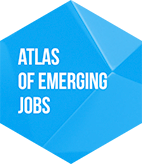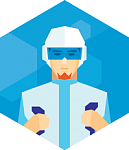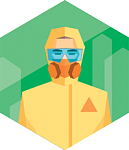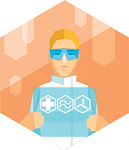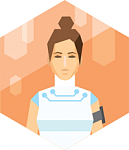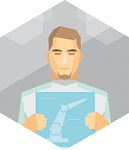Catalog
Healthcare
Healthcare has always been a vital part of human life, and its significance will only continue to grow in the future; even today we can see life expectancy growing, which means increasing attention to human health, from inception and throughout the entire life, while the attention of medical science is shifting toward age-related diseases and health support.
DNA research has launched a new era in medical science, with doctors switching from diagnosing and treating diseases of separate organs and tissues to a holistic approach to human health. As gene analysis becomes an affordable service, every patient will soon have their own “natural medical record” (his own genetic code, decoded by specialists) that they will show to their doctor at a consultation. First of all, this approach provides a boost for the development of preventive healthcare, which aims to identify and prevent potential diseases at early stages. In addition, mass treatment methods are giving way to individual therapy at the genome level. Moreover, biotechnology is already broadly applied in healthcare, such as in the development of medicines and growing of transplantable organs and tissues. Robotics is also making a contribution, as automatic devices boast better precision than human surgeons, while carefully designed robotic prostheses, apart from compensating for disabilities, may open new horizons for people.
Future medical science will enable highly accurate diagnoses throughout the life of a person and an opportunity for people to predict diseases that may affect them and their children in the future. Another benefit will be the ability to study in detail the genetic characteristics of an embryo and alter some of them to prevent lethal hereditary diseases.
Computers will be used to simulate personal development scenarios of a disease, to work out a treatment method suitable for a particular case. Special robots will perform surgeries with minimal damage to tissues in order to reduce the risk of infection and avoid post-surgery scars. Robotic prostheses for limbs and certain organs will become highly sophisticated as well as affordable. Special “replaceable parts” will appear for different activities. For example, there is already the Cheetah running prosthesis, while American drummer Jason Barnes, who lost his right hand, has an artificial hand, with which he is able to play complex drum solos.
Network-enabled microdiagnostic devices will immediately alert a doctor about any significant changes in the condition of a patient. The same devices will enable patients to receive advice from any specialist through cloud bases. Biological feedback systems are gaining popularity, such as fitness trackers that analyze the user’s physical activity and quality of sleep, or neurogadgets tracking brain activity. These devices will become more common as their accuracy and sophistication increase.
Donor tissues and organs will be grown in laboratories from biofibres that are not rejected by the body. As early as 2006, English scientists managed to grow a small liver from cells taken from the blood from a baby’s umbilical cord. Not long ago, a team of scientists from the universities of Sydney, Harvard, Stanford and Massachusetts Institute of Technology announced that they had created an artificial section of the circulatory system. These technologies are still in their testing stage and are not used in actual surgeries, but this is a matter of little time.

Specialist providing regulatory and ethical framework for medical, diagnostic and bioengineering centers engaged in transplantology and genetic modeling. No advanced laboratory will manage without advice from a bioethicist, especially in dealing with organ cloning and serious interference in embryo genes. It is not accidental that Yale University, a leading American school, has already launched a curriculum in bioethics at the faculty of medicine.

In case of unusual development of a disease, builds a computer simulation of the biochemical processes of the disease to understand its root cause (discovers irregularities at the cellular and subcellular level). The specialty has been around in the western countries for a few years and is aimed at making the fullest possible use of the entire load of accumulated information (genetic, biological and medical), to develop a personalized approach for a specific patient. Translational medicine is practiced in Russia as well, with experts predicting great numbers of jobs in the industry.

Specialist in genome programming to predetermined parameters. Gene therapy (alteration of the human genetic apparatus to fight diseases) has been growing at an incredible pace in the past decade. While the method is mostly tested on animals, there have been cases of successful application of gene therapy on human patients. For example, in 2014, Great Britain announced that 6 patients suffering from choroideremia (hereditary genetic disease, still incurable and causes blindness) experienced eyesight improvement through the course of gene therapy. This is, however, only the first step. The next step is to modify the genome. There has already been an experiment to change two monkey genes.

Conducts primary and scheduled genetic analysis in a diagnostic center, processes data from diagnostic devices, and provides an opinion and further treatment recommendations. Genetic analysis allows for the identification of cancer markers, diagnosis of hereditary diseases, determination of the specifics of a patient’s metabolism and study of diseases caused by bacterial infections. The most popular genetic screening service is provided by U.S. company 23andMe. Commercial genome studies are conducted in Russia as well (although they are more expensive), for example, by companies such as Genoanalytica and Gene Family Health.

Specialist with good IT knowledge, building and managing physiological databases, and producing software for treatment and diagnostic equipment. The Big Data revolution is happening in healthcare nowadays, providing scientists with a priceless opportunity to quickly collect and analyze vast amounts of information. This means that a good medical database manager will never find himself without a job.

Specialist in design and computer graphics, material science, strength of materials, machine parts, and electric appliances; capable of spatial thinking, understanding human anatomy and physiology, and is familiar with biocompatibility of materials and devices, and is an expert in medical and technical safety.

Professional engaged in developing the life cycle of a medical institution or managing the same, from design to winding up. Today, hospitals are not just institutions providing a certain range of medical services. Activities related to R&D, education, training and mastering new technologies is playing an increasingly important part in the development of medical institutions. Managing sophisticated systems like these will definitely require proper specialists.

Specialist researching markets in pharmacology, medical services and medical equipment; develops marketing policies for companies and research centers. Another job that has existed in the world for a long time but is relatively new in Russia due to the Russian healthcare system being state-owned and state-managed until relatively recently. There are not a lot of jobs in this specialty. According to HeadHunter, there were only 6 vacancies in July 2014, but the job should be on offer in the future.

Specialist in programming diagnostic, treatment and surgery robots. Robotic surgery began to develop as early as the 1980s. The most widely known robot surgeon, Da VincI, is already used worldwide in various surgeries, from mitral valve reconstruction to spinal surgery. According to 2013 data, there are around 2,000 surgical systems of this kind in the world now.

Specialist developing tailored diets based on molecular food analysis, taking into account the results of the genetic analysis of the patient and the specifics of their physiological processes.

Sociomedical expert developing balanced solutions for problems of the aging population. This specialist will help you adjust your lifestyle or choose a suitable diet and physical training. Growing life expectancy is increasing pressure on healthcare institutions, as retired persons require medical attention more often. Any government would benefit from the country’s senior citizens maintaining healthy eating habits and a careful lifestyle.

Highly qualified diagnostician, familiar with information and communication technologies, able to determine a diagnosis online. Focused on provisional diagnosis and prevention. These specialists may be involved in remote mass preventive medical check-ups, or provide support for data centers processing information from personal diagnostic devices and health portals. Online medical services are already a reality, and very soon doctors will be able to receive various data about a patient’s health from wearable gadgets. Remote diagnoses will become more accurate, and instead of unconvincing online consultations conducted in a Q&A form, we will receive top-class services provided by well-trained specialists.

Studies the genetic record of a patient to develop tailored treatment plans (diagnosis, prevention, treatment) and offer respective medical insurance products. A logical continuation of the shift towards a tailored approach to treatment. Strong genetic analysis and forecasting capabilities will enable the prevention of many diseases before they require treatment, while awareness of specific risks will help to devise a customized insurance plan.

Specialist providing communication between research, diagnostic, treatment and prevention institutions and managing cooperation programs and joint projects. His function is to put together an appropriate team of scientists, engineers, researchers and developers, focusing them on realizing potentially profitable ideas, and coordinating the entire joint process.
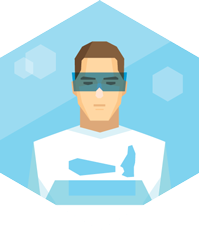
Develops artificial functional devices (robotic prostheses) and organs compatible with live tissues. This area is growing fast: implanted electric muscle stimulators are being developed for paralyzed patients; an implant appeared recently that functions as a natural eye; limb prostheses perform more and more complex functions. While prostheses and implants are most likely to be designed by dedicated specialists, actual implantation surgeries will be performed by re-trained surgeons, otorhinolaryngologists and ophthalmologists.

Professional developing the technological process and selecting materials and conditions for the formation of a particular tissue or organ. The results of his work will be used by the transplantology surgeon.
Проектировщик инфраструктуры захоронения радиоактивных отходов — строит карту максимально безопасных зон для захоронения, продумывает способы упаковки радиоактивных отходов, логистику их доставки и обеспечение безопасности захоронений.
Construction
Construction is one of the vital infrastructural branches, responsible for economic development and the everyday comfort of the population. The industry is one of the leaders in terms of jobs in the country. Meanwhile, modern construction requirements are leading to its significant transformation.
Changes in this area take a long time to happen. Nevertheless, standard and custom construction projects are beginning to utilize advanced materials to provide higher comfort, environmental safety and operational cost-efficiency (e.g. reduced energy consumption). Advanced materials enable new architectural and design solutions that were impossible to implement before. For example, optical fiber concrete will make rooms brighter; carbon fiber will allow flexible structures; kinetic glass will control oxygen levels by “inhaling” air from the outside and “exhaling” it back. Some traditional materials, such as wood, are back in demand. More and more large structural elements will be prefabricated at factories, to be assembled into a building at the construction site.
On the other hand, traditional labor is being replaced by 3D printing technologies. Behrokh Khoshnevis, Professor at the University of Southern California, invented a layer-by-layer printing method, which he expects to allow for the “printing” of entire concrete buildings. A portable structure, taller than the house to be built, will be able to recreate a building to a particular drawing in 20 hours. The technology will be perfect for emergency construction, e.g. after acts of God, or for construction of affordable housing. London Architectural Office Foster+Partners is working on a lunar home project. A tube frame with an inflatable dome will be coated with a special foam material by a robot equipped with a 3D printer. The material will be produced on the spot, from moon soil mixed with magnesium oxide. Similar technologies can be applied in mass construction on Earth.
In standard construction, the processes of designing, erecting and operating buildings are becoming automated. New buildings are constructed to suit energy efficiency and smart environment requirements. Along with technologies allowing automation of standard construction, a market for personalized homes will also develop. Customers of tailored projects will be more actively involved in the planning and construction process.
Growing mobility will lead to the popularity of easily transportable houses. Aside from variously equipped wheeled mobile homes, building block houses will appear that can be easily and quickly assembled from prefabricated elements. Another area is turnkey construction of cities, i.e. with all the buildings, utilities and other amenities.
New industrial methods and advanced materials will allow for increases in labor productivity and will make the industry safer.

Designs structure models and selects the best sets of components for their printing; supports the house printing process.

Specialist in the development of infrastructural solutions for children, senior persons and disabled persons around properties (e.g. playgrounds, elevators for the disabled, signboards for people with impaired eyesight, ramps, recreational space, etc.).

Specialist involved in the entire life cycle of a project. Building Information Modeling(BIM) is the gathering and comprehensive processing of all architectural, constructional, technological, economic, and other data about the building, with all relations between them, in a design that treats the building and everything related to it as a single object.

Professional with a good knowledge of advanced construction technologies (e.g. structures made of advanced materials used to upgrade existing buildings and structures, utilization of advanced solutions for electricity and water supply, water discharge and air conditioning in offices, residential buildings, etc.), and promoting them in the industry and implementing them in particular projects.

Specialist who designs a construction site in terms of its environmental impact in order to advise companies on solutions the least harmful for the environment.

Construction specialist using digital structure designs. Can use image recognition systems to evaluate the construction progress and adjust the process based on the data analysis.

Specialist in the design, installation and adjustment of smart home management systems (e.g. appliances, security systems, electricity and water supply systems, etc.). Smart homes are appearing already. However, the job is not likely to become popular until seven to ten years from now.

Determines the degree of wear and tear of structures and buildings, selects solutions (including the use of advanced materials) for their renovation and reinforcement. The specialty is especially popular in the reconstruction of historical city centers.

Specialist engaged in the design of sustainable buildings, fully self-sufficient in terms of power thanks to microgeneration technology (alternative energy sources, trigeneration, i.e. using three energy sources at once: electricity, heat and cold), and utilization of energy-saving materials and structures.
Security
Before the 1990s, security matters had been taken care of either by citizens or the government. After the 1990s, the sector developed a segment of private services that began to grow rapidly. In this section, we focus specifically on that segment, not considering national and military security and protection of citizens from crime.
Human life is becoming ever more comfortable and long-lasting. However, new threats are emerging, such as man-made and environmental disasters, new types of weapons, and cyber attacks. This raises the topicality of security issues. Advancement in information technology will lead to enhanced capabilities in security and personal protection, bringing about changes in security standards in virtual worlds as well as in real life. Fewer and fewer security functions will be entrusted to humans, while more will be entrusted to smart systems of monitoring, analysis and automatic control.
Advanced security systems will require new methods of legislative control, professional standards, and technical regulations. More independent companies will appear with large numbers of specialists qualified in risk management. Demand will emerge for services to assess and design personal security in various conditions. For example, a person will be able to consult a security specialist before going to a jungle or a metropolis with high crime rates.
In the increasingly complex and volatile world, various personal security devices will gain wide acceptance. For example, there are already bicycle helmets with sensors able to respond to an accident and send a signal to the emergency ward, jackets with built-in radio stations and GPS navigators for mountain climbers and micro pepper-spray cans for iPhones. Also, technical means will be designed to enhance the professional capabilities of security service specialists, such as sandals with extendable flippers for beach lifeguards, or exoskeletons for firefighters. Moreover, people will receive help from robots, such as the swimming robot Seascout that can track a drowning person by GPS.
In the distant future, security systems will become proactive, eliminating the potential causes of emergency before it happens. For example, a special system will analyze street camera footage in real time and recognize the signs of unlawful actions. In 2014, Knightscope produced robots for patrolling city streets. They are programmed to notice unusual behavior of people and vehicles and notify the control centre accordingly. They are equipped with sensors to recognize smells and measure temperature. In addition, they can memorize up to 300 license plates in a minute, thereby contributing to traffic control. In the future, they will help minimize violations in the physical world, while surveillance systems will promptly identify any offender.
At the same time, the development of artificial intelligence and the ubiquitous application of automated control systems may lead to those systems becoming too complicated for a human being to understand, or to users becoming excessively dependent on them. This, in turn, may pose a serious threat if a programme malfunctions or decides to act on its own. This is why in the future, the development of security systems will involve designing means of protection against AI malfunction and alternative rescue plans if computers become impossible to use.

This specialist ensures the continuity of business processes in case of any problems or IT system failures at a facility caused by cyber attacks, software errors, man-made disasters affecting Internet connection, or other emergencies.

Specialist engaged in developing gadgets for the additional security of the user in an emergency. The job requires a smooth combination of common sense and imagination, as self-protection issues may be approached from different directions. For example, Armstar has designed the protective sleeve BodyGuard, equipped with a camera, alarm device, and an electric shocker. It will help the wearer protect himself, while designed to not inflict lethal wounds on a perpetrator. South Korea has invented an even milder option, i.e. a jacket equipped with mini cameras. In case of an assault, it takes photos of the attacker and publishes photos in the Internet, so that the criminal will not be able to conceal his identity.

Engineer who deals with time-delayed disasters, which people become aware of gradually, e.g. pollution around large industrial centres, the Pacific plastic dump, the thawing permafrost, radioactive dumps, etc. The engineer is tasked with designing and implementing plans to mitigate such disasters and prevent them from happening again. Aside from the usual environmental problems, such as global warming and deforestation, new threats are emerging, which humankind became concerned with only recently. For example, a large garbage patch was discovered in the Pacific Ocean in 1997. Because of oceanic currents, an area, which, according to various estimates, takes up between 0.7 and 15 million square kilometres, is littered with over 100 million tons of garbage. Most of the garbage consists of fine pieces of plastic that may be toxic and are eaten by fish or jellyfish. To handle such types of threats, we need highly qualified specialists able to make decisions under uncertainty.

Specialist in assessing the state of security at an existing facility and monitoring all types of threats such as mechanical damage, fire, environmental threats, cyber attacks, etc.

Specialist tasked with assessing and designing the life of a person in terms of all possible risks (from genetic disposition to specific diseases to the chance of becoming a crime victim) and their prevention. The specialist may be hired as a staff consultant or to provide one-time services, e.g. if a client is going on a business trip to a dangerous region.

Operator of advanced automated robotic security systems.Responsible for monitoring their condition via sensors and surveillance cameras and dispatching an immediate response team to a facility if needed. The occupation is an evolution of the security guard job and will be eventually completely replaced with automated security systems.
Aviation
Aircraft can quickly carry people and cargoes to enormous distances and reach areas inaccessible for road transport, which is invaluable in the case of Russia’s vast distances. Historically, our country used to be one of the leaders in aircraft construction and air transportation, but lost this status. However, the sector has been recovering lately, including segments of small aircraft systems, regional airports, etc. Substantial technological breakthroughs are expected in the area, which will have ever-increasing importance in the future.
Air transportation will become more affordable and diverse. General aviation is developing fast, and within 10 to 15 years, aircraft may appear that will be cost comparable in price to automobiles. In 2012, the Finnish aircraft engineer Aki Suokas presented a prototype of the 70 kg single seat aircraft FlyNano, able to rise to 3,000 meters, moving at a speed of 140 km/h. The device is not for sale yet, but can be pre-ordered for EUR35,000.
In addition, unmanned aviation will also progress rapidly. Cities will use unmanned aircraft to deliver cargoes, for construction, or to monitor traffic and security. For example, the Massachusetts Institute of Technology has created the SkyCall quadcopter to help people find their way in unknown locations. Whenever lost, you can use your smartphone to ask the drone for assistance. Russia has been the first country to use quadcopters for pizza delivery, with the company Copter Express offering the service to its clients.
The airship segment will also gain a second life, with new airships using advanced technology, which will be used in hard-to-reach areas (e.g. to extinguish forest fires and deliver cargoes). Intensifying air traffic will require new and improved ground control systems. This will impose new requirements on infrastructure construction and intelligent control support systems.
The aircraft construction industry is undergoing changes as well. First of all, the application of composite materials allows manufacturers to reduce the weight and increase the durability of aircraft. For example, half of the Boeing 787 Dreamliner is made of composites. Other important factors will be the advance of intelligent control systems (in particular for large craft, such as cargo planes), active threat protection systems, as well as the use of biofuels and transition to electric engines.

Specialist in the development of recycling procedures for basic materials, equipment and aircraft framework components.The job already exists. There is the Aircraft Fleet Recycling Association, which includes major producers (such as Boeing, Bombardier), engine producers (Pratt&Wittney, Rolls-Royce), recycling companies, and many others.

Specialist tasked with designing airship models according to their applications (cargo/passenger) and aeronautical conditions.

Specialist designing airfields, hangars, maintenance depots and navigation infrastructure components for airships. Airships can be used to deliver cargoes and passengers to places that are hard to reach due to poor transport infrastructure. For example, the Russian-based Amur Minerals Corporation is considering a possibility of heavy equipment delivery by airships to a road construction site. The road will cost around $150 million.

Professional in designing software for air traffic control over traffic-intensive cities and regions (in case of a significant growth of unmanned and general aviation, with sharply increased loads on the airspace and a shift toward flexible traffic management).

Professional in processing data and preparing expert opinions based on the monitoring of the aircraft and surrounding area.

Specialist designing and modelling affordable aircraft of various complexity for general aviation. Appropriate engineers are already available, but the growth of general aviation (e.g. in the Far East) is predicted to raise demand for them.

Professional who designs interfaces and software packages for unmanned aircraft control; responsible for programming and operating the support, navigation and safety systems of unmanned aircraft.
Art and culture
Culture is one of the oldest spheres of human activity, though it has gradually become a prerogative of a tight circle of professionals. However, with routine operations performed by machines, more and more people will engage in creative activities and produce their own works of art. This change will be driven by the affordability of graphic technologies (special photo filters for iPhone allow creating artistic photos in real time, and Garage Band software can replace a recording studio), as well as by the fuzziness of artistic criteria. On one hand, this is a good trend, because in the 21st century, a talented author can find an audience easier than ever. On the other hand, it is hard not to get lost in the enormous stream of creative products, and even harder to define art as such. A need arises for individual media filters to help the user to avoid being drowned by streams of data. In addition, a connoisseur may require personalized search algorithms and tutors to help him/her build their own trajectory of aesthetic perception and cognition.
Technological progress may bring humankind to new levels of art perception and creativity. We will be able to create complicated artistic objects using 3D printers, robots and neural interfaces, as well as to learn to better control our artistic states. The expanding virtual space is enabling some artists to move entirely to digital worlds, creating new and unexpected forms. For example, employees of Blizzard Entertainment have started their own metal band in World of Warcraft. Players can visit its concerts in respective localities, or, subject to obtaining certain artifacts, turn into a guitarist of the band for 12 seconds.
We are now witnessing a withdrawal from traditional ways of how art engages the spectator, with interactive formats used more and more often. Already, there are interactive books for iPad. Immersive theater is also gaining popularity, erasing the division between the stage and the auditorium, with the spectator involved in the act to the fullest possible degree. The most remarkable example is the British theater PunchDrunk with more than 20 conspicuous projects, including Sleep No More, based on the works of Shakespeare and Hitchcock. Before the performance, the different scenes of which take place in 44 rooms on 4 floors, spectators are required to put on white masks and then choose the order in which to travel through the performance.
The mutual penetration of art and other fields produces interesting combinations, such as Science Art, a type of modern art where artists use scientific achievements and, quite often, are scientists themselves. Art is beginning to play a significant part in education as well. Art universities may appear where students will learn through various forms of art as well as other methods.
Different art strategies and technologies are fusing into curious forms of cooperation. Art is becoming more collective, with artwork turning into a complex project involving – aside the artist – mangers, software developers, engineers, etc. In addition, the need for co-creation is generating demand for dedicated social networks for artistic people. Demand is also rising for participatory art, where the artist only issues instructions, and exhibition visitors use them to create artistic works themselves. For example, the interactive exhibition do it, based on this principle, has been treading the world for as long as 20 years. The Garage Museum of Contemporary Art hosted the exhibition in summer 2014.

Specialist able to appraise new forms of artistic works consisting of heterogeneous elements and noted for their complexity and/or fragility (e.g. science art, street art or performance).

Sets up artistic teams for specific creative projects. These teams may include artists of various specializations, scientists, software developers, engineers, and professionals from other fields.

Mind fitness expert engaged in helping art workers enter the flow state, as well as other states characterized by increased creativity. The trainer is also engaged in developing awareness, because one of the most important challenges for an artist is the continuous reflection on reality.

This professional builds individual trajectories of interaction with works of art for the user.He/she possesses an excellent knowledge of the cultural environment and draws up an aesthetic development programmes in accordance with the tastes, needs and opportunities of the client, e.g.to track the development of various aspects of Gothic art from the Middle Ages to the present time, in the fields of architecture, design, literature, music, and cinema.

Applies scientific data and knowledge in creative work. Science art is not only practiced by individual artists, but is also supported by prominent educational institutions. For example, MIT has its own Center for Science, Art and Technology, while the New York School of Visual Arts launched a bio-art curriculum last year.
Education
Information technology is one of the fastest-growing sectors of the economy. Changes occurring in the sector open up new and seemingly incredible opportunities in other areas such as design, transportation, staff and resource management, marketing, and education.
A number of significant processes are now happening in the IT sector. To begin with, telecommunication solutions provide links between various parts of the world. The volume of data transmitted over networks is increasing, leading to the improvement of data processing solutions. The industry is going to be revolutionized by Big Data, which will help solve the problems of early diagnosis, or create computer systems for simultaneous interpreting, taking into account all linguistic peculiarities.
Also, digital solutions are becoming increasingly mobile and user-friendly. With almost every family owning a laptop computer and every other person on the planet using a smartphone, in ten years’ time every urban citizen will have at least five or six interconnected wearable gadgets, e.g. augmented reality glasses, a fitness bracelet, and a smartphone with a smart wallet feature. Gadgets will take care of your athletic shape and daily regimen, help you organize your timetable, and suggest an optimal solution in various situations, e.g. where to have breakfast in a given part of town based on your dietary preferences, or what to do in the evening when you are in a particular mood.
Growing data volumes will call for new security systems, data filtering and protection tools, not least because the proliferation of cloud-based systems increases the dangers of a data leak. Within the next 10 years, technologies will appear for precise identification of Internet users, with each and every click tracked. Technologies from science fiction and spy films will become a reality. The user of a device will be identified not only by his/her fingerprints or with a retina scan, but also through a DNA test. This will lead to deanonymization and total transparency, which, on one hand, will have a dramatic effect on Internet behaviour, and on the other, will cause protests and calls for anonymity.
Technologies will develop for checking data traffic integrity and information reliability, and verifying its sources. Demand will arise for insurance institutions providing protection against risks related to virtual environments, as well as for consulting agencies dealing with user security and image on the Internet. With many documents (even identification cards) gradually translated into electronic form, personal data may come under threat of total loss due to hacking attacks or system failures, which calls for new data protection solutions.
The increasingly powerful cyber-attacks against important facilities such as banks, telecommunications, media publishers, etc., are raising the question of their information security. In the distant future, programmes will become capable of cyber crime, on par with humans.
The boundaries between virtual reality and the physical world are becoming fuzzier, which means that the digital society will be organized in roughly the same way as in the real world, including state borders and government control. The “digital gap” between people (in terms of computer literacy) will create a new type of social stratification, leading to the emergence of special programmes for mass education in information and communication technology. Laws regulating the cyberspace will appear everywhere. “Electronic” governments will become fully operational and more interactive.
Moreover, virtual reality is turning into an intermediary between the user and the real world, with more and more remotely controlled smart devices and machines. This makes life easier, though it means that the virtual world can be used to attack physical objects. For example, criminals will be able to remotely block, damage or destroy a production line or transpiration network. The automation of processes is increasing the number of sensors connected to data networks to monitor system states. This, in turn, makes the infrastructure more vulnerable. For this reason, strong protection techniques need to be developed for smart networks and the Internet of things, along with alternative ways to manage them in a critical situation.
Innovations in other industries appear at a juncture with IT, spawning multiple potential cross-sector breakthrough points. However, the development and production of hardware, software and security systems still remain priorities in the sector.

Creates programmes and equipment (e.g. biofeedback devices) to train users in entering productive states of consciousness (high focus, relaxation, increased creative abilities, etc.). For example, Wild Divine sells devices and software to teach users concentration, relaxation and awareness. There are also biofeedback devices, developed specially for lucid dreaming.

Specialist tasked with developing and conducting educational and instructional programmes for children and adults, teaching them to behave in a way to reduce impact on the environment (no excessive consumption, separate waste disposal, environmentally conscious lifestyle, etc.), as well as programmes for industrial enterprises on more eco-friendly industrial practices.

Specialist in an educational institution or independent educational project with competences in online teaching, supporting the development of online courses on particular subjects or disciplines; organizing and promoting specific courses or standard academic pathways.The coordinator moderates communication between teachers and students within courses or platforms and defines requirements for platform improvements.Some Russian universities have established entire divisions in charge of these functions.For example, MIPT has the Laboratory of Innovative Educational Techniques, and the Higher School of Economics has the Educational Environment Development Centre.This has allowed the universities to develop their own online courses for the Coursera platform.Russian online platforms, such as Universarium and Eduson, are also developing.

Professional in building an educational “route” for new specialists, made up of courses provided by educational institutions, including online programmes, as well as trainers, simulators, internships, etc. Based on those, he/she develops an educational track, taking into account the psychological type, abilities, and goals of a particular person.

Specialist in the development of educational programmes based on game techniques, acting as a game character. This specialist will replace traditional teachers at school. Russia has long-standing traditions of game-based education. The promotion of games in schools is currently restricted mostly by regulatory framework.

Specialist in developing and organizing educational games (business, history, science fiction, etc.) and game support with the use of simulators. The educational potential of games has been studied in developed countries since the 2000’s (in 2001, MIT and Microsoft launched the joint project Games-to-Teach), while lately, gamification (application of game mechanics in non-game processes) has become a noticeable trend. In 2013, the educational portal Coursera published the course Computer Games and Education, and the University of New York even offers a master’s programme for game masters. In Russia, the development of educational games is promoted by the Russian Association for Games in Education.

Specialist who develops programmes for training personal cognitive skills (e.g. memory, concentration, reading speed, mental mathematics, etc.) using special programmes and devices, taking into account the psyche and purposes of the user. Such programmes exist already, for example, the Mind Fitness Training Institute in Virginia offers all those willing a seven-day course to train their cognitive skills, while Lumosity has developed over 40 online cognitive training games.

Specialist who organizes group discussions of an issue or collective creative activities to help students learn new material during their practical activities. The set of skill required in social science, psychology and marketing is becoming sought after in education. For example, in 2014, the U.S.-based Corporate Education Group, specializing in consulting and corporate training, posted a vacancy for a virtual course moderator, while ATIM worked out a series of training courses for mentors and moderators, including a course in online commerce. Moderators are actively engaged in the Russian educational sphere, e.g. most educational programmes of the SKOLKOVO Moscow School of Management involve moderators.

Professional in the development and organization of training programmes focused on the preparation and implementation of projects in the real sector of the economy, with the study of theoretical material as a mandatory support activity.

This professional has experience in launching their own startup projects, supervising new startup teams, teaching them business skills on case examples from his or her own projects.In the West, the mentor is a developed specialty, whereas in Russia it is just beginning to grow popular due to the poor condition of small business.Nevertheless, business incubators and accelerators (e.g.the HSE business incubator, Skolkovo Startup Academy, and the venture academy LaunchGurus) already have their own mentorship programmes.Independent specialists’ services are also in demand.

Educator engaged in supporting individual development of students within disciplines of an educational programme, elaborating individual tasks, and providing career guidance.
Консультант по воспитательным стратегиям для родителей — специалист, который анализирует модели поведения ребёнка и родителей внутри семьи, создает «буферную зону» между школой и родителем, разрабатывает и помогает реализовать семейную воспитательную и образовательную стратегию.
Кросскультурный педагог — специалист, который находит точки соприкосновения различных культур внутри одного класса, владеет техниками медиации и адаптации иноязычных детей. Для успешной работы такой специалист должен обладать одновременно знаниями и навыками психолога, модератора и антрополога.
Преподаватель цифровой этики и безопасности. Разрабатывает программы для обучения экологичному и осознанному поведению в социальных сетях, консультирует детей в проблемных ситуациях (например, шантаж или кибербуллинг).
Тьютор для педагогов — анализирует проблемы, с которыми сталкивается педагог в школе (в первую очередь в связи изменениями подхода к обучению), помогает разработать решения для кризисных ситуаций, транслирует новые педагогические техники/практики.
Tourism and hospitality
The Soviet Union had a fairly developed system of domestic tourism, supported by the closed nature of the country, but the situation has changed for the worse in the industry since 1991. On the other hand, a large segment of outbound tourism has emerged, enabling Russian people to see foreign countries. Modern hospitality practices began to appear only in the early 1990s, including high-quality hotels, restaurants offering good cuisine, entertainment clubs, and other services for tourists. Hospitality remains an industry with substantial growth potential, driven by both Russian travelers and foreign visitors. Growth opportunities exist, first of all, outside metropolises (Moscow and Saint Petersburg), in large industrial centres, small towns with а historical past, and natural preserves.
The development of transportation systems and increasing mobility allow travelers to reach their destinations faster and easier. This will pose new challenges for the tourism and hospitality sector, resulting from the growing number of tourists and their demands.
The sector is among the first to show a tendency for reducing the number of intermediaries between customers and services. This is why many mainstream services will gradually become simpler and automated, with integrated transportation systems and fare tickets, logistic tools for individual trips, automated control rooms for synchronizing individual public transport, service robots, electronic guides and simultaneous interpreting devices. Many jobs in the segment will become endangered, with a significant share of business taken up by machines. Already, hotels are replacing their human employees with robots. For example, the Yotel hotel in New York has a special luggage-toting robot, while the staff of the Chinese Pengheng Space Capsules Hotel consists entirely of robots, from the doorkeepers to the waiters.
Since the diversity of choice will make tourists pickier, new travel formats will emerge, along with new capabilities of customizing leisure according to the client’s physical shape, tastes and interests. Search services and applications for travelers will select relevant information based on the profile of a particular client. For example, they will promptly notify the client during a tour about newly opened flea markets or the arrival of a famous antique dealer, if the client is interested in vintage items. This essentially means that the job of a travel agent as we know it is becoming endangered, with respective functions to be performed by special software in the future. On the other hand, a need arises for personalized tours invented by people spiritually close to the client, in a peer-to-peer format.
With the advancement in virtual reality technology, one of the challenges facing the sector will be to compete for customers against the media and entertainment sector, since customers will be able to choose between a trip to the U.S.A. for a live rock festival and VRMMORPG Woodstock. This will force the industry to extend the range of services to utilise this technology, so that tourists can go on sightseeing trips and shows involving augmented reality, games and re-enactments of historical events.
In the conditions of tough competition, clients’ attention can only be captured and held by offering them a unique experience. This increases the importance of area branding, i.e. filling it with objects and game formats allowing tourists to participate in historical events or experience unparalleled emotions. Various aspects of impression tourism are already developing, including food and drink, agricultural, environmental and spiritual tourism. The latter, being one of the oldest types of travel, is gaining a new life, owing to greater mobility. Demand will arise for unusual architectural objects in extreme areas, quick-to-build structures and “shimmering cities”, i.e. temporary settlements where people are united by common interests to create a unique atmosphere and scenario. A bright example of an existing shimmering city is the Burning Man festival. For eight days a year, an entire tent city and exotic art objects spring up in the Black Rock Desert. Over 60,000 people came to live in the city in 2014. Russian equivalents are the Empty Hills and Archstoyanie festivals.

Designs various layers of augmented reality around an area, taking into account its landscape, as well as historical and cultural context. For example, this specialist can create several options for Red Square: Ivan the Terrible era, 1917, stilyagi, etc. The designer will have to combine the skills of designer and programmer with good historical knowledge.

Professional guide able to develop and personally conduct unique tours according to the requests of individual clients. In a way, the job already exists and will become mainstream as traditional travel operators disappear.

Specialist in managing hotel robots. Hotels already use robots in the U.S.A., China, Japan and other countries. Although mechanical doorkeepers, housekeepers and couriers have been doing a good job, a human is still needed to look after them. Such an attendant should be a highly organized specialist with multitasking skills, familiar with mechanics, and have experience in dealing with artificial intelligence.

Specialist in creating automated ticket booking, navigation and hotel booking systems. Founders of travel agencies, such as AviaSales.Ru, are already capitalizing on the design of unique search algorithms. Demand for simple, convenient and cheap solutions in the area will only increase. In addition, more and more attention will be paid to the personalization and creation of individual itineraries.

Advisor and responsible person for filling a virtual world with cultural content connected with a particular area. Creates the image and legend of a location, and adds design, identity, news, tourist services, and various events. All this makes the area unique, attracting visitors and turning it into a competitive tourist destination. The job already exists, and will grow in relevance as time goes on. Accordingly, requirements for specialists in this field will increase as well.

Specialist tasked with creating “information landscapes” for tourists, taking into account the realities of the region, types of consumers, and currently popular trends in the travel industry. Whereas a brand manager performs the function of a creative director, a territory architect is a designer looking for specific and detailed solutions for particular tasks.

IT expert engaged in developing software and applications helping users find their way on a particular itinerary based on their interests, tastes, plans and ongoing cultural events.
Media and entertainment
In the 20th century, mass media became a principal means of communications and its objective was to provide people with as much information as possible on what is going on in the world. In the current 21st century, this role is changing, entailing the need to restrict information streams. Responding to this need, media resources are gradually turning from unique news sources into powerful filters, highlighting important messages and helping one become familiar with the agenda.
Even now, a user can set up a feed to read certain pages, or filter information on social networks using special add-ons. However, the convenience of such settings still leaves much to be desired. In the future, users will be able to create their own information streams and define their editing principles. Media software, such as search engines, information sorters and processors capable of creating customized information packages for users, will provide increasingly greater assistance in the sector. Moreover, computer services will develop for automatic translation, speech recognition, search, extraction, and sorting and processing of data (e.g. transformation of source data into complete news pieces, infographics, or text notes). However, mass media will retain its role, as many users will use standard settings, not wanting to influence what they get.
The notions of information objectivity and expertness will grow blurry, as the number of sources is growing too fast, making it practically impossible to assess their quality. This is why ordinary users will start switching to a more competent use of information. Educational curriculums will even include courses on collecting, interpreting and using data. Articles and books with advice on this topic are already popular, with examples such as Clay Johnson’s The Information Diet. The skill of verifying the quality of information will become part of basic literacy, on a par with reading or simple mathematics. Also, increasingly sophisticated software will be developed for verifying information and checking its sources.
The growing automation of the media sphere will take many journalistic functions from people and entrust them to machines. For example, the Associated Press has already acquired a new robot for writing short texts containing corporate income statements. Professional journalists will continue their work in formats requiring significant creative talents, e.g. independent journalism.
There will be a massive introduction of new technologies for stimulating human perceptive organs (olfaction, tactile sensations, taste, sense of gravity). New information channels will allow media and entertainment to achieve even closer and more real contact with the consumer. These techniques are being developed already. In 2013, a Japanese film theater showed a smell-enhanced presentation of Terrence Malick’s The New World, with scenes of grief and anger accompanied by scents of tea and eucalyptus, joyous events by citrus, and romantic episodes by flowers. 4D technologies (which are more frequently applied in amusement rides than theaters) enable the viewer to feel wind, water sprays, real-life movement, or a change of body position. Neural interfaces immersing the user in a synthetic reality will produce a giant breakthrough.
Games will become a most prominent means of entertainment, from urban quests involving augmented reality to massive events in virtual spaces. A secondary economy will also develop in virtual worlds, influencing the real-world economy. Virtual currencies, weapons, and armour are already for sale for real money, e.g. in games like World of Warcraft or Diablo 3.

Manages information channels and selects content matching users’ expectations by adjusting search engines, aggregators and processors of information. The profession already exists in digital media. However, demand for it will grow together with the expansion of individual mass media. Eventually, the specialty will turn into a versatile competency.

Creates an emotional background for content, using new information channels, including pathways directed into the user’s brain. The designer controls the stimulation of sensory organs to create the necessary feelings and emotions of the user during content consumption.

Organizer, creator of, and guide to, game universes in real and virtual spaces. Urban quests are now popular, from the Running City to games like Claustrophobia, designed for confined spaces. There are also alternate reality games (ARG), with very fuzzy boundaries between the real world and the game. Games like those will only spread in the future.

Professional who selects information and a manner of presentation to match the requirements of a particular user. Today, the stream of content is offered to a user as a selection of recommended information products, based on geotargeting, the user’s search queries, or user interests which were specified in the user’s social network profile. This is done mostly externally, by an algorithm that someone created for their own purposes. In the future, people wishing to generate such a stream for themselves and by themselves will create demand for similar algorithms, which they will make themselves or order from relevant specialists.

The media policeman is a law enforcer in the media sphere. Identifies transgressions by monitoring media resources personally and/or using special software. In Russia, this function is partly performed by Roskomnadzor (Federal Service for Supervision of Communications, Information Technology, and Mass Media) and the Safe Internet League. In the future, however, it will grow into a separate job due to increasing information abuse and cyber crime rates.

This specialist works in cooperation with psychologists, linguists and engineers to create software tools for finding, processing and distributing information on the Internet (search engines, semantic analyzers, aggregators, robots, writing).

Responsible for shaping a general worldview according to which, the media streams he/she controls will be created. This specialist controls content selectors that generate information streams for users within a given worldview, and performs high-level tuning of media robots. (A similar function in society is performed by “culture sommeliers” from Victor Pelevin’s S.N.U.F.F.).

Specialist in designing solutions for work, studies, and leisure in virtual reality.Develops software and hardware based on the biological and psychological parameters of the user (including custom orders).

Creates concepts for virtual worlds: philosophy, laws of nature and society, social interaction and economic standards, landscape, architecture, sensations (including smells and sounds), animals, and a social world.
Biotechnology
Until not long ago, the biotechnology industry had been underdeveloped in Russia, which had fallen far behind most developed industrial countries. The industry is, however, a most promising one — during the coming decades, it will develop itself and have a strong influence on other branches, such as healthcare, power engineering, basic materials, urban and rural economy. Biotechnology provides living systems to solve the various problems of humankind. Commitment to a maximum possible level of environmental safety, development of genetic engineering, and the possibility of simulating many natural processes on a computer have brought modern science to the verge of very promising discoveries: new energy sources and organic electronics, biodegradable materials and gene reprogramming. Biotechnology often helps to find new solutions across industries, e.g. when power engineers and microbiologists are working on a biofuel together.

Specialist in designing custom biocompounds and replacing synthetic compounds with biocompounds. A number of important medicines, e.g. penicillin and insulin, are already produced using genetically modified bacteria.
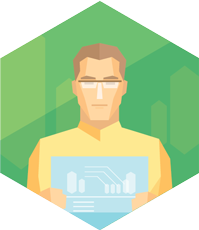
Specialist in planning, designing and creating closed-cycle technologies involving genetically modified organisms and microorganisms. This type of professional will be irreplaceable in sustainable cities, as they will be able to calculate the required capacity of bioreactors, design urban farms, and elaborate waste recycling systems.

Professional in charge of monitoring and analyzing the environmental condition of public spaces (parks, boulevards, squares, alleys, etc.), development and implementation of solutions for landscaping, populating territories with animals and insects, and other measures to maintain environmental balance in urban green areas. For example, Royal Parks, a London-based company in charge of eight city parks, employs its own staff of environmental specialists responsible for 418 rare species of plants, animals and mushrooms. On the other hand, the specialty may be regarded as a new version of the long-existing trade of urban ecologist, which appeared as early as in the 1970s.

Specialist in replacing obsolete solutions in various branches with biotechnology products. They will provide assistance to transportation companies transitioning from diesel fuel to biofuel and to construction companies switching from cement and concrete to biomaterials.

Designer of new cities based on environmentally-friendly biotechnologies, specializing in construction, power engineering and environment pollution control. The job is already on offer, with high-tech green cities being designed and constructed in Malaysia, China, the United Arab Emirates, India, South Korea, and European countries.
Agriculture
The growing world population, which may increase by another two billion people by 2050, requires increasingly more food. For the humankind to avoid a global famine, as the one depicted in the science fiction film Interstellar, the agricultural sector will have to address a number of serious challenges.
First, the climate is changing, and agricultural technologies will have to adapt to new seasonal and weather conditions, including possible droughts, floods, and abrupt temperature changes. Another major problem is soil exhaustion. A solution may be found through aerobic restoration, which is a technology for saturating the soil with aerobic bacteria.
In addition, crop-farming diversity is declining: there are fewer new species of crops every year, with existing ones becoming extinct. This entails a need for deep research in artificial selection. GMO technologies allow for the breeding of new species with predetermined properties. For example, leading specialists are now working to create perennial grain crops that will help to reduce erosion, the fuel expenses of harvesters, and the use of pesticides and fertilizers.
The issue of a technical upgrade of the industry is especially topical for Russia, where the use of obsolete agricultural equipment is often the case. In the foreseeable future, robots and automated systems will help people in managing farms and agricultural enterprises. Various sensors will remotely communicate precise information about weather conditions, soil humidity, and plant and animal conditions; unmanned agricultural aircraft will watch over the fields from above, while careful robotic harvesters will relieve people of tiresome labor and accelerate the harvesting process. So-called farmbots are already being used and, according to estimates by global experts, will be in mass use before 2020. With the help of ground sensors and aerial surveys, we will be able to develop
the “precision farming” principle based on the notion that a field is heterogeneous, and to obtain maximum yield, with different parts requiring different treatment. At the same time, farming will stop being a purely rural domain, as cities will start building vertical farms, i.e. high-tech agricultural complexes on rooftops and in buildings.
Today, very few people think about the future and agricultural professions are not in high demand, but their prestige will grow over time. Technological innovations will allow efficient land utilization through reduced manual labor, while the growing complexity of the industry will change the requirements for the quality of human capital. Agricultural experts of the future will need systems thinking, developed management skills and knowledge of IT and biotechnology. Farmers will begin thinking as innovative businessmen, applying new technological solutions to increase the efficiency of their farms.
Besides industry development, much attention is being devoted to environmental issues, and harmful fertilizers will be gradually replaced with safe alternatives. Farming robots and smart systems will be gradually adapted to solar and wind energy. In the U.S.A., alternative energy sources are comparable in cost to traditional sources.

Expert in waste disposal, i.e. in developing the principles of agricultural waste disposal and soil restoration.

Highly qualified specialist ensuring the competitive performance of products and cost-efficient operation of agricultural companies; adjusting operations of an enterprise to suit the needs and requirements of the market. Responsible for managing a firm’s economic risks. While a few schools do provide training in the specialty, demand for it still exceeds supply on the job market.

Highly qualified specialist in the implementation of new technologies, engaged in computerization and automation of agricultural facilities.

Specialist managing automated machinery at a farm: sensor systems, drones, and farmbots.

Specialist in outfitting and maintaining agro-industrial facilities in skyscrapers and on their rooftops in big cities. Vertical farms are sustainable and eco-friendly structures enabling crop and animal farming within city limits. They are also on the agenda of the near future. The first commercial vertical farm was built in Singapore in 2012. Skyscraper farms are now planned in South Korea, China, UAE, USA, France, and other countries.

Specialist in the application of genetically modified products in agriculture; engaging in the implementation of biotechnological achievements and creating products with preset properties, In spite of the public debate around the subject, most scientists believe GMOs to be harmless, which is why the use of GMOs keeps growing: in 2013, over 11% of the world’s cultivated land is sown with genetically modified crops, while 91% of soybeans, 88% of cotton, and 85% of corn in the USA are genetically modified. In Russia, GM seeds have been subject to registration since 1 July 2014. The first harvest of genetically modified soybeans is scheduled for 2016 and 2017, and the profession is sure to be in demand at the time.
Агрогенетик — специалист по генетической селекции и модификации растений и животных. Находит генетические решения, позволяющие повысить урожайность (поголовье), устойчивость к заболеваниям и изменениям климата и общую рентабельность овощной/зерновой культуры или породы.
Агроэколог — специалист, который планирует и контролирует процесс переработки и вторичного использования сельскохозяйственных отходов. Помимо классических решений (вроде использования навоза в качестве удобрения), появляются все более неожиданные варианты: например, можно делать строительные материалы из грибов, выращенных в контейнерах на смеси измельченных кукурузных волокон, рисовой шелухи и других отходов сельского хозяйства.
Мобильный ветеринар— ветеринар, который работает на аутсорсе и при необходимости выезжает в небольшие фермерские хозяйства или консультирует онлайн, дистанционно получая информацию о состоянии животных с датчиков биологической обратной связи.
Разработчик цифровых моделей АПК— специалист, который занимается созданием и управлением цифровых копий сельскохозяйственных экосистем, так, чтобы, отслеживая изменения (состояния почв, освещенности и т.д.) и управляя ими, максимально экономно использовать все ресурсы и получать оптимальный результат в долгосрочной перспективе.
Сельскохозяйственный диетолог — специалист, разрабатывающий и настраивающий индивидуальные схемы питания для сельскохозяйственных животных, что позволяет повысить качество молока и мяса.
Energy generation and storage
Electricity, quite naturally, has long been perceived as the “blood of the economy”. Our dependence on this branch will only increase with the growing number of devices around.
The nuclear power industry will become one of the symbols of the new environmentally conscious society, as it can ensure stable electricity prices and minimal impact on the environment, avoiding carcinogenic and greenhouse gas emissions, or the specific adverse effect of coal and oil fuel power plants that still occupy a significant share of the traditional power market. The number of power plants in the world will increase, and their safety will be greatly improved. Advanced technologies will be utilized to reduce nuclear waste.
At the same time, private alternative energy (micro wind generators, solar panels, etc.) will also develop. According to European Commission estimates, 2.8 million jobs will be created in the European renewable energy sector by 2020. Even now, wind generators produce 28% of Denmark’s electricity, while 7% of Germany’s electric power is provided by solar panels.
This will lead to people across the globe producing their own power and redistributing or selling the surplus (see Power Grids and Power Consumption Management). Power generation, transfer and storage processes will eventually become automated, requiring little or no human involvement. The power supply principle of mobile devices, which are a part of our everyday life, will also change, with a large portion of energy to be transmitted from the body of the user via generators sewn into clothes and footwear.
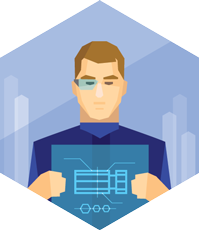
Specialist involved in designing various energy storage systems: high-capacity batteries, heat accumulators, flywheels, etc., enabling energy storage for redistribution in smart grids between peaks and troughs. Efficient power generation is only half of the job’s success, as solutions need to be developed for its efficient utilization and storage. For example, recuperative braking systems used in electric cars charge the battery, but excess energy is wasted. An energy storage device designer must bear this in mind. Major energy storage device projects are already underway. For example, in September 2014, Germany launched Europe’s first 5 MW storage station. Its main purpose is to stabilize the electricity supply in case of uneven load in the grid. It is able to manage the task much faster and more effectively than heat power plants, which are traditionally used for this purpose.

Develops, implements and maintains small power generation systems (wind solar, bio-, nuclear micro generators, etc.). The main reasons behind the development of micro generation today are the growth of environmental consciousness and reduction of consumer spending. Western countries have already recognized the job, with the trend expected to reach Russia soon. The job will be posted by owners of country houses and vertical farm designers.

Specialist in the development and design of advanced technological solutions for micro generation, tailored to user needs. Micro generation is developing intensively around the world, including Russia. However, in frequent cases, standard solutions cannot be adopted due to specific reasons, such as climatic conditions, requiring specialized systems meeting any types of requirements.

Manages upgrade of central heat and power plants, hydro power plants, and nuclear plants; implements advanced safety, sustainability and resource efficiency methods. In spite of the general trend toward the diversification of electric power sources, the lion’s share of electricity will still be produced centrally in the near future. Equipment ages and wears down, entailing a need for professionals able to introduce the best practices at power plants and CHPs. Major players in the power market, such as Siemens, already provide services for upgrading generation systems, which means their demand for respective specialists will grow over time.

Specialist in technological solutions for capturing the excess energy of moving vehicles, especially when braking, e.g. automobiles, metro trains, or electricity-driven mass transit vehicles. Energy recuperation is not a revolutionary field: rail transport, trams and trolleybuses already use recuperative braking systems. The technology will remain popular for a long time to come, and demand for specialists able to build such systems will increase.

Designer of mobile/wearable power generation systems. Creates personal items (including clothes and footwear) with micro generation capabilities. Already, there are street clothing items equipped with solar batteries, such as the Ecotech jacket created by Italian company Zegna Sport.

Specialist in generation facility operation management based on weather conditions, predicting power generation levels depending on long-term forecasts. Steps are already being taken to prepare the ground for the new job. For example, the Electric Reliability Council of Texas (ERCOT) bases its predictions regarding loads on generation facilities on long-term weather forecasts.
Power grids and power management
If electricity is the blood of the economy, then power grids are the circulation system. The world is growing in complexity, with increasing requirements for power grids and demand for respective jobs.
The key changes in power grids and power consumption are linked with smart grid technologies. These are grids with intelligent control systems that allow, based on the power consumption level in a building/office (precisely determined by equipment, lights and electric sockets), for the setting of optimal operation modes (e.g. washing clothes at night, when power rates are lower). They can also quickly respond to any problems (e.g. voltage surges), thereby preventing damage to equipment, and automatically recover after a breakdown.
These technologies reduce losses in power delivery systems and make power delivery more reliable and increase continuity. They can also help consumers choose an energy supplier and manage consumption and spending. In addition, users who own their own micro generators may have surplus power to sell.
Another trend is the evolution of distributed generation. A total blackout is a favourite device of writers in disaster films: insidious hackers or natural calamities disrupt power mains and a whole city falls into darkness. Distributed power allows for the prevention of such a scenario, as local accidents in separate grid sections will not lead to global implications. Developed countries have put it on their active agendas as far back as the 2000s: in particular, the USA passed a law offering considerable benefits to small electricity producers after a major accident in the power system on the north-east of the USA and in Canada in 2003. The share of centrally produced electricity has been declining since then. There are no equivalent initiatives in Russia yet, but as companies lack funds to upgrade the mains, distributed power may become a topical issue in Russia in the near future, creating a need for respective specialties.

Specialist servicing the infrastructure for charging electric cars and other vehicles (e.g. unmanned cargo aircraft). The US has the best developed grid of this kind at the moment, with around 7,000 charging stations.

Professional engaged in auditing and consulting in power consumption. Inspects private homes, residential blocks, detached buildings and factories for energy losses and provides recommendations on power consumption optimization. Energy audit already exists as a licensed activity. The job is quite popular, with 845 vacancies in July 2014, according to HeadHunter. Demand for these specialists will rise even higher in the future.

Specialist working to maximize the comfort and power efficiency of user environments. This system designer advises on the best tools to use in a particular situation and what to do with the most power-intensive household appliances, such as the air conditioner or refrigerator.

Specialist analyzing potential system failures, designing the most efficient operation modes, and ensuring the designed safety of power grids and waste disposal. Familiar with non-destructive control methods and smart grid commissioning.

Specialist with a good knowledge of the Russian and global power market, dealing with power sales. Need for the profession is caused by the increasing competition on the power market and emergence of a large number of private businesses. There is no demand for it in Russia as of now, but issues of micro generation and distributed grids will become highly topical very soon. In the west, however, the specialty of power marketing expert is quite developed.

Specialist tasked with designing and modelling smart grids, micro generation systems, and smart power environments for various purposes; develops technological and infrastructural requirements to systems throughout their life cycle. Provides solutions for the same task as the designer of power consuming systems, but on the end of power supply. There are foreign companies that provide the service (e.g. Siemens offers the SureGrid service, enabling real-time power consumption control within a specific building).
Road transport
People travel more and more every year, enhancing the role of the transport industry. We travel short and long distances more frequently and impose more stringent requirements on the speed, comfort and cost efficiency of our journeys. In Russia, road transport has traditionally ensured the unity of our immense country, although there has not been much change in the industry in the past decade. Nevertheless, global competition will force Russia to adopt new methods of road construction and transport management.
Intelligent systems are becoming an essential part of transport infrastructure, both in terms of traffic management and vehicle control. Computers are taking over logistics. Unmanned vehicles will soon appear on the roads, safer and more predictable than traditional ones. According to Google estimates, they will bring about a 90% reduction in the number of road accidents, fuel expenses and overall traffic volume, as well as allow the driver to read a book or watch a movie instead of having to watch the road all the time.
Materials and surfaces are becoming intelligent, along with the hardware: adaptive road surfaces (equipped with sensors and solar panels), lightweight heavy-duty structures and high-tech lining for vehicles and carriages are already in use. Smart roads will replace map-making services by directly transmitting information about the traffic situation ahead (jams, ice, accidents, etc.) to drivers. This will enable more effective route planning and timely decision making. It is an ideal solution, taking into account the anticipated proliferation of unmanned vehicles.
The state of Virginia (USA) already has its own Virginia Smart Road, equipped with a lighting control and weather monitoring system, sensors tracking humidity, temperature, vibration and weight of cars passing by. The length of the experimental section is just 3.5 km, but there are plans to extend it to 9.2 km.
Movement speed is increasing, especially in railway transportation, which allows it to compete with aviation at short distances. The fastest train in the world today is the Japanese JR Maglev magnetic levitation train that can cover a distance of 581 km in an hour. The innovative train is undergoing testing on an experimental 18 km section, which will become part of a high-speed line from Tokyo to Osaka in the future. There are also various alternative projects and ideas for the transport industry. Russia, for example, is working on a string transport project, a transportation system where light carriages will move on thin “string” rails stretched between supports. Trains in the system will be able to move at speeds of up to 500 km/h. For example, a journey from Moscow to Nizhny Novgorod will only take an hour, and a trip from Moscow to Saint Petersburg will last only an hour and a half. In turn, entrepreneur Ilon Mask, who founded the first privately owned space company SpaceX, is planning to build a “hyperloop”, a passenger transportation system where people would travel in small capsules inside a low pressure pipeline. According to his estimates, the average speed of a capsule in the system will exceed 900 km/h.

Professional with a competence in selecting the best methods of cargo and passenger delivery using different modes of transportation; control and adjustment of traffic throughout a multimodal network; monitoring of the passability of transportation hubs; redistribution of traffic flows in transportation networks.

Specialist who designs structures (frame, lining, parts) made of composite materials with a preset weight, durability, wear resistance, etc. Composite materials are already used in different types of transport, while experts are actively looking for new applications. In particular, in autumn of 2014, the Composites Applications in Industry: Rail Sector Opportunities conference was held in Great Britain.

Professional that designs tracks, junctions and stations for high-speed railway systems, taking into account regional and climatic specifics. Specialists of this type are already being trained in western countries. In particular, Michigan Technological University offers courses in this field.

Designs intermodal hubs (systems for changing between modes of transportation), calculates their cargo and passenger capacity, wear resistance, and evaluates their growth potential. Such specialists already exist in Russia as well as in the West, however, the increasing load on the transport infrastructure and growth of passenger and cargo traffic will boost demand for them significantly in the future.

Services technologically heterogeneous transportation structures, intermodal cargo and passenger hubs, infrastructure and station facilities.

Develops software for unmanned vehicles and traffic management systems; controls smart management systems. Various solutions exist today to monitor complex shipments, though shipments are managed by people. The future will require automated traffic management systems.

Professional selecting and installing adaptive road surfaces, marking and road signs with radio frequency identification, surveillance systems, and road condition sensors.
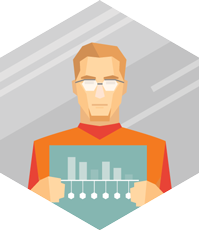
Professional analyzing and monitoring information, environmental and technological threats to transportation networks. Unlike traffic safety experts, these engineers analyze and prevent problems connected with the functioning of whole transportation networks. With the increasing speed of data transmission, demand is growing for faster movement and higher speed of transportation, which means more stringent requirements for network infrastructure and safety.
Water transport
Water transport has been vital in Russian history, providing communication between different regions and rich trading opportunities (Volga trade route connected Scandinavia with the Arab caliphate, and the route from the Varangians to the Greeks connected it with Byzantium). Although in the past years the role of water transport reduced to a certain extent, it remains an important part of the transportation industry, especially in freight forwarding. If the intensive use of the Northern Sea Route (the shortest route between Russia’s European region and the Far East) is resumed, it will probably revitalize the industry, and the Russian water transport will regain its significant role in shipping between Europe and Asia.
A multimodal system is advancing in sea transportation (shipment of cargoes under a single contract, using different modes of transportation, e.g. by railway and sea). Intelligent management systems are applied, along with the introduction of new fuels and advanced materials.

Familiar with ice navigation in the Extreme North, able to plot the best course for a ship and make quick decisions to change them in case of emergency.

Professional who develops and implements technologies to increase the resilience of shoreline structures and vessels to different threats (natural, anthropogenic). Training in the specialty is already provided (System Technology of Marine Infrastructure), although a significant upgrade of technologies (in particular, increased environmental requirements and intelligent water transport management systems) will change job requirements.
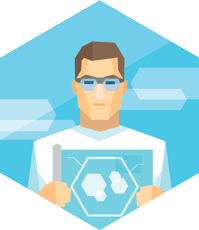
Specialist monitoring and controlling the environmental characteristics of the port, vessels and the surrounding space (port waters, air and adjacent territories, with all the plants and animals inhabiting them). Develops software to restore the environment of the port and surrounding waters.Western universities are already deploying their own education programmes on port water systems (e.g. the ecosystem of Boston Harbour is described in detail on the University of Massachusetts website).
Space
In spite of the general fascination with Star Wars and the dreams of inhabiting distant planets, the popularity of the space sector has been declining over the past decade, which is quite logical, since there have been no significant breakthroughs in the area, and with enough urgent problems on Earth. However, the sector is now at a turning point due to the first successes of the private space sector. From a terra incognita open only to intrepid pioneers, space is gradually turning into a commercial sector, which is opening broad opportunities for creating private businesses, e.g. providing support for satellite launches and probes.
Private rocket launches are already cheaper than for traditional rockets. Investors from Silicon Valley are seriously discussing the prospects of Mars colonization. In 2013, they started a global screening of astronauts for a colonization mission to Mars, named Mars One. The screening will continue until 2015. In 2023, after a long training course and a whole year en route, the first crew of four is expected to land on the Red Planet. A new group will arrive every two years and the population of the colony should increase to 20 people by 2035. NASA, together with DARPA, is going to send a manned ship to other star systems within the next century.
The sector intensively uses paperless workflow, building complete digital models of items with all the connections between their components. Digital modelling of behaviour of a whole aircraft is performed in various conditions, as well as interaction between its components under various exposures. An increasingly greater number of components and aggregates are produced without human involvement.
Within the next 20 years, space tourism may become one of the most promising branches of the space industry. In 2007, Virgin Galactic started selling tickets to its SpaceShip Two, a private travel ship, which can fly at altitudes of over 100 km. The programme has not started yet, but should be launched in the near future.
Space may also help industry on Earth, as it can be used for toxic waste disposal, production of high-quality crystals in zero gravity, and mineral resource extraction from the Moon and asteroids. Astrophysical studies show that comets and asteroids are rich in iron, gold, nickel, platinum and other precious metals.
The space conquest opportunities will grow considerably if we succeed in creating affordable technologies to deliver cargoes and people to the orbit, e.g. build a “space elevator” from the Earth surface.

Maintains life support systems in extreme conditions.
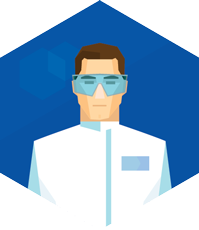
This specialist studies the behaviour of various biological systems (from viruses to animals and humans) in space (structures, spacecraft, planet bases); studies the physiology and genetic changes of organisms; develops stable space ecosystems for orbital stations, Moon bases and lengthy journeys.
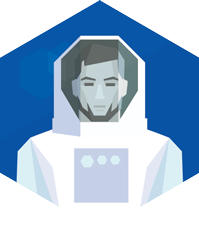
Specialist engaged in exploring and mining mineral resources on the Moon and asteroids.

Professional services the near-Earth transportation network and is responsible for designing traffic corridors (orbital flights as well as transcontinental flights along ballistic trajectories) and synchronizing launches on Earth (in case of more frequent launches and a manifold increase in the number of orbital objects).
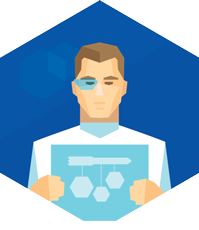
Specialist in designing space structures (stations, satellites, etc.) based on reconstruction and disposal needs. Demand for the profession will arise in the coming years, in connection with more intensive exploitation of near-Earth space and resumption of plans to colonize the Moon and Mars.

Professional developing visiting programmes for near-Earth space (and beyond), orbital complexes, and other space structures (including Moon bases).
Mining and processing of mineral resources
Russia is one of the richest countries in terms of mineral resources. That is why their extraction and processing are of great significance for our economy. Demand for mineral resources will remain quite high in the coming decades, which is why these industries will continue needing highly qualified staff. A few factors play key parts at the current stage.
First, traditional deposits of oil, gas and other resources are depleting, and production companies are forced to develop increasingly more complex fields as well as new types of resources, such as oil-bearing sand, shale gas, and offshore and deepwater fields. Deepwater drilling will be needed not only in the oil and gas industry but also for industrial mining of manganiferous iron ore and other metals.
Second, environmental requirements are increasing in the field of transporting mineral resources and field conservation. An example of an advanced and environmentally safe technology used now is the collection of methane emitted during mineral resource extraction into the pipeline to prevent gas emissions into the atmosphere. Biotechnological solutions are emerging in the industry as well, e.g. ore refining using bacteria.
Another important trend is the attempt at production cost reduction and resource efficiency. For example, methane from coalmines can be liquefied to be used as fuel. This technology will be applied primarily for production needs, e.g. to fuel dump trucks and illuminate structures, and it is especially useful at deposits with harsh climatic conditions, where shift or unmanned work methods are used.
Third, staff mobility in the sector will grow. Already, increasingly fewer specialists are prepared to move with production activities. Therefore, unmanned technologies will be used more often, with employees working remotely in virtual teams and telemetric systems. Some industries will develop with minimal numbers of staff, which will be replaced with intensive use of technology (e.g. remote healthcare). Only experts will work in shifts at such facilities.
Extraction and processing of mineral resources is a high-risk industry, which is why technologies are being developed to ensure the safety of people at production sites.

Specialist ensuring coordinated interaction between people located at the site and remote team members. His main task is to set tactical goals, arrange communication amongst the team, and resolve differences and conflicts.

Specialist in environmental threat analysis, environment protection during resource extraction and recovery activities in a given territory in the closing stages of resource extraction.

Specialist working at natural resource facilities throughout their life cycle (from exploration to field conservation and rehabilitation), taking into account the integrated nature of these facilities. For example, one site may contain both oil and gas fields, with a need to seamlessly combine these absolutely different extraction technologies.

Services and manages automated systems for monitoring, development, production and processing of mineral resources (including remote ones). The specialty is already in demand in Russia, with 98 vacancies published in July 2014, according to HeadHunter.

Specialist engaged in analyzing arrays of data arriving from the field to control the production process, prevent possible emergencies and make quick decisions. It is highly probable that after 2020 the job will be replaced with artificial intelligence.

Professional who controls the process of field development and exploration of new fields using unmanned aircraft equipped with magnetometers and other geophysical sensors. Such drones are already used on the Yukon plateau in Canada to explore new fields.
Metallurgy
Metallurgy is one of the key branches in Russia, with strong traditions and high inertia. Growing global competition in the sector will lead to dramatic changes driven by a turn toward environmentally safer production processes, equipment replacement, and technological process quality. Industry standards will gradually shift in the direction of “white” metallurgy, the principles of which are already being introduced at the Chelyabinsk Pipe Plant.
Production processes will more often use methods ensuring minimal environmental impact, which, in some cases, will enable a transition from two-stage metal production (processing, smelting) to a one-stage process (extracting metal directly from the ore). Metal production waste will be directed to other production lines (primarily acids, alkali, and sulfur).
The sizes of metal-making facilities will change as well. Instead of huge complexes, medium-sized facilities will be constructed, with higher flexibility and improved quality control. Mobile facilities will appear that will produce special metals, moving to wherever metal demand is high, e.g. major construction sites.
Customers will also review their requirements for metal products. In particular, the need to reduce the weight of a structure while preserving its strength is reducing demand for traditional products in the sector, such as sheet metal, pipes, bars, slabs, etc. They are being replaced with advanced materials such as plastics and composites, including, carbon fibre, metal composites, metal ceramics, etc.).
On the other hand, we will see a growth in demand for new products, such as nanopowders and complex alloys. The share of biometallurgy (extracting metals from low-grade ore using microorganisms, bringing about substantial cost reductions) will grow. Precision alloy (metals with preset properties, such as elasticity, fusibility, conductivity, etc.) production will expand.
Production processes will become more automated and robotized. Some blue-collarjobs in metallurgy (there are over 500 of them now) will decline (become endangered), giving way to versatile equipment operators. At the same time, workers will perform increasingly fewer physical operations, eventually switching to remote process control (sometimes even without being present at the facility).

Specialist engaged in designing alloys with preset or variable properties (changing based on operating conditions).

Professional tasked with metallurgic waste disposal and environment rehabilitation.

Engineers advanced equipment for producing metals with a high degree of readiness (powders, alloys), using processes at the intersection of different sciences (biometallurgy, etc.).

Specialist with competences in mechatronics and engineering, operating and servicing high-tech equipment throughout its life cycle.
Advanced materials and nanotechnology
Technological progress is almost palpable now, as we are not only using traditional materials more efficiently, but are also creating new ones, with preset parameters. This allows a dramatic improvement of product quality, mainly in the aerospace industry, mechanical engineering, and construction.
Material science has been revolutionized by composite materials, or compound heterogeneous materials consisting of a reinforcing component and a matrix and offering improved strength, weight and plasticity. Composites will pose a serious threat to traditional material branches, such as ferrous metallurgy.
In addition to plastic and metal-based composites, which we have grown accustomed to, glass-based composites are also gaining popularity. In the future, composite structures can be embedded with “smart components” (microchips and controllers) allowing the user to change the properties of rooms and equipment to their liking. This will lead to the emergence of active environments, i.e. working, living and studying areas controlled by intelligent systems or the user, depending on the mood or the task at hand. For example, for a yoga session, you can select a more neutral color for the walls; for child’s play, make the walls softer and soften out the corners; for a party, you can cool down the room and turn on embedded bright backlights. Smart rooms can adapt to various weather conditions by adjusting temperature and light intensity.
Another most significant invention is 3D printing, i.e. the use of special compounds to reproduce any object, whether a computer circuit board, musical instrument, weapon, or prosthesis. The technology can be applied, among others, in the transport industry. For example, at the International Manufacturing Technology Show in Chicago in September 2014, the U.S.-based Local Motors invited visitors to see the creation of Strati, the first, functioning car ever produced with a 3D printer. The process took 44 hours to complete. Although the electric engine, seats, wheels, tires and the windshield had to be manufactured by traditional methods, 3D printing drastically reduced the number of parts and time of assembly. According to the company’s CEO John Rogers, very soon, two people will be able to assemble a complete car in less than an hour.
New discoveries in this field are leading to improvements in the properties and durability of materials, mechanisms, and structures. The emergence and development of 3D printing has marked a new era in manufacturing, as end products can now be actually home-made, rather than manufactured by special factories, which means that every consumer can become a producer. Home printers grow cheaper every day. The most affordable ones are already priced at $500, with enthusiasts uploading more and more drawings to print all kinds of things.

This specialist develops glass products using glass-based composite materials.

Professional engaged in modelling the properties and forecasting the life cycle of nanomaterials with the use of digital models. This designer is a highly qualified programmer with a good knowledge of nanophysics and nanochemistry.

Specialist engaged in developing and implementing recycling technologies, creating new materials from industrial waste, and developing waste-free production processes. Russia is only beginning to master the technologies of lean and sustainable production actively used in the West. For example, young designer Victor Monserrate invented the recycling bicycle, a machine that turns plastic waste into a thread that can be used to produce furniture. New Zealander Daniel McLaughlin found out that rug producers wasted about 7% of wool, and launched a “biowool” production line using wool waste and biorubber as raw materials.

Specialist in charge of the safety of workers in the industry, end product users, and the environment.Develops programmes enabling a quick reaction to the negative impact of production and application of nanoproducts.

Professional responsible for designing composite materials within smart environments, which change their properties according to given tasks in a home, office, or industrial facility.

Specialist who replaces traditional materials with composites in construction, mechanical engineering, robotics, medicine, etc.This professional will design advanced materials depending on the requirements of consumer industries regarding frost resistance, fragility, durability, hypoallergenic properties, etc.
Robotics and mechanical engineering
The ideas that had for long seemed to belong to science fiction may materialize in the near future, as robot manufacturing techniques have grown substantially cheaper, arousing great interest in intelligent machines. According to a study by Cisco, the number of household robots in cities doubles every nine months. In the 2020s, robots will blend with the interior of residential flats and urban areas.
Models have been created that can look after elderly people (give out medication, contact the doctor, send an SMS for an ambulance if the person suddenly falls down), assist in cooking, clean up after pets, and even fetch beer from the fridge.
Furniture and household appliances are evolving as well, with smart tables, mobile wardrobes and robotic baby strollers appearing in addition to the already popular vacuum-cleaning robot. All this makes household robotics likely to become one of the fastest-growing branches of the economy.
Industry (mechanical engineering in particular) is actively introducing new-generation robotic systems with sufficient flexibility to adjust to incoming tasks and learn in the process. Soon mechanical engineering enterprises will work according to the principle of robots making robots. Developed countries, with Russia following just behind, are building factories that are 90% automated and higher. High-tech equipment at mechanical engineering factories will become more module-based and distributed, ensuring fast assembly of new production lines. Workers at such factories will be promptly grouped and re-grouped into highly effective teams consisting of people with required knowledge and skills, able to quickly perform specific production tasks.
Robots will play a vital part in medicine. Systems are being developed to assist in complex surgeries, while robotic prostheses will allow disabled people to live full and rich lives.
Will robots take our jobs? Experts predict that machines will replace people in routine (repetitive) jobs, nudging them into creative fields (see Endangered Jobssection). Wherever there is a need for creativity, in-depth analysis or communication abilities, man is still unrivaled.complex surgeries, while robotic prostheses will allow disabled people to live full and rich lives.
Will robots take our jobs? Experts predict that machines will replace people in routine (repetitive) jobs, nudging them into creative fields (see Endangered Jobssection). Wherever there is a need for creativity, in-depth analysis or communication abilities, man is still unrivaled.

Professional involved in designing children’s toys, games, gadgets and various mechanical commodities based on programmable robots, taking into account the mental and physiological specifics of young age.

Specialist engaged in selecting composite materials to manufacture parts, mechanisms and joints for robotic devices with preset properties, not without the use of 3D printing.

Specialist who designs control systems for industrial and combat robots based on neural interfaces, enabling control by distributed teams as well as individual operators.

Specialist tasked with designing robotic systems taking into account the user’s ergonomic requirements, based on their physical and mental abilities.

Professional tasked with designing and programming household robots (e.g. babysitter, cleaner, washer, gardener, dog walker, etc.), which will help run the house. These robots are integrated with other components of a smart home and can move around and perform complex household work.
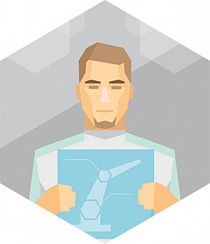
Specialist designing robotic devices for manufacturing (for painting, welding, packing and stamping jobs), industrial logistic devices, e.g. loaders, transporters, manipulators, and robotic systems consisting of those devices, such as “lights-out” factories. Vacancies in the specialty are already appearing on HeadHunter.

Professional designing biocompatible robotic systems and devices for medicine and biotechnology (e.g. robot surgeons, diagnostic robots, robotic prostheses, etc.).

Professional engaged in controlling and servicing robotic systems, including in complex and dangerous facilities and in dealing with hard-to-reach or microscopic objects. The job is already on offer. General director of the Chebarkul Milk Factory, who announced a transition to automated production in 2014, made this comment: “We have a lot of work done manually now, but when we have had the production lines automated, we will need people to maintain the equipment”.
Light industry
Light industry has a rather unfortunate history in Russia. It had never been a priority in the Soviet era, while in the 1990s, production volumes dropped fivefold. Although the sector is still very backward in terms of productivity, it has seen slight recovery owing to the emergence of small niche companies producing clothes, footwear and accessories. In the future, some of them are likely to achieve considerable success, having learned to predict global fashion trends and mastered advanced management techniques.
What trends will drive the development of the industry in the coming years?
Natural fabrics, such as linen, cotton, viscose and others, are growing more expensive and are therefore being replaced with advanced synthetic materials. Demand is rising for high-tech smart fabrics (self-cleaning, fluorescent, or those that accumulate solar energy). Spaniard Manel Torres has invented a spray-on fabric, which is sprayed over the body from a can. Italian designer Mauro Taliani made a shirt with “shape memory”, which changes sleeve length depending on the weather and the wearer’s body temperature. Clothing items are often fused with wearable gadgets, from snowboarder jackets with built-in radios to T-shirts with displays and mp3 players. The future will also have demand for fabrics made of custom-grown natural materials with preset properties, such as special GMO linen for crease-resistant fabrics.
Another trend is the personalization of clothes and development of small-scale production. Custom online tailors and stores are also appearing where a user can choose the color of a shirt or jeans, or have a shirt made to a specific order, after choosing the material and design and submitting their measurements. Development does not stop here. As 3D printing is growing cheaper, a 3D printer will appear in almost every home in the foreseeable future. After downloading a drawing from the Internet, you can print out a smartphone case or a plastic souvenir. Professional designers even create entire clothing and footwear collections using this technology. With increasingly cheaper production processes, intellectual property will be of the highest value, with fashion-obsessed people chasing the latest 3D drawings. To get new clothes, you will only have to visit the website of your favourite brand or designer, buy a cartridge with the necessary material, and download the 3D model of the dress you like. Then you can take the model to the nearest automated tailor shop, upload it into a decoding terminal, and adjust the future dress to your size in a virtual fitting room. After that, the dress will be made by an automated production line. Prototypes of such devices already exist.
Future clothes will be comfortable and environmentally friendly, creating demand for materials that are the most salubrious (warming, transpiring, disinfecting, etc.) and harmless for the environment (biodegradable or energy accumulating). In 2013, the London designer Shamees Aden presented a prototype of regenerating sneakers made of a biomaterial resembling a second skin. After wearing, the sneakers can be restored in a special solution. Additionally, technologies will be needed to recycle 3D printed clothes back into material for cartridges, as people quickly grow bored of clothes but consider throwing them out as wasteful.
Mass production will also be automated: even now designers model clothes using graphic processors (such as Virtual Fashion Professional), with special machines cutting the patterns. Apart from that, clothes manufacturers are looking for solutions to reduce waste during cutting.
Life rushing on, and an increasing number of buyers are giving preference to online shopping, which means clothes producers will have to learn to sell them via the Internet. Some Russian brands are successfully positioning themselves in the online market such as the basic clothing brand “Oh, My”, which targets those who want to buy simple clothes, such as single-tone T-shirts, vests or socks. Some online stores offer users virtual fitting rooms, which can at least help shoppers choose the right design. However, most of these fitting rooms only work with 2D images, which cannot provide a clear vision of how a thing will fit. Still, you can get a full 3D scanning of your body within 12 seconds with the help of the special Shapify Booth. The technology will soon be available to everybody, and we will build 3D models of our bodies, with special software calculating whether clothes will fit well.
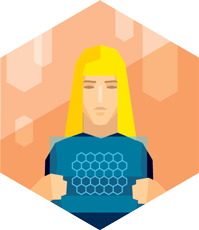
Specialist engaged in designing new synthetic fabrics and materials with preset properties (e.g. LED or shape memory fabrics).

IT specialist tasked with translating the designer’s clothing sketches into instructions for a robot or 3D printer. In the future, users will be able to use them to print their own clothes, or have them made by an automated tailor shop.

Professional with knowledge in ecology and materials science, developing optimal methods for recycling and re-use of old clothes.

Controls clothes manufacturing in terms of safety and health benefits (heat insulation, ventilation, etc.) and designs medical clothes, such as fabrics treated with a disinfectant.

Specialist developing software for designing 3D clothes, patterns, and virtual fitting rooms.

Specialist at the crossroads of design and IT, combining clothes with wearable gadgets as decorations or for specific purposes. For example, there are hug shirts, equipped with special sensors: if you hug yourself, they transmit this information to a smartphone, and a person with the “twin” shirt will feel your virtual hug.
Children’s products and services
Children’s products and services play an important part in the life of a society: the games children play now will influence their future interests, values and perception of the world around them. This means that every item intended for children must be designed primarily as an educational product containing a game component.
The children’s industry has not been an industry in itself until lately. Children’s furniture was made by furniture producers, children’s clothes were made by light industry, and children’s food was produced by the food industry. This often led to a situation where children’s needs were simply neglected by producers. The sector was recognized by the state as an independent industry only in 2013.
Several important processes are now happening in the area. The first is mediatization, with 90% of products being made are based on long multi-character stories (e.g. cartoon series). Media characters shape the notions of values and behavioral standards in children’s minds. For example, every episode of the Smeshariki series deals with a difficult situation that a child may face in his life.
Second, the current most successful strategy is to create long-lasting educational products (i.e. existing in different media: comic books, cartoons, computer games, toys), growing together with the child and helping him meet new challenges. For example, Lego products follow a path from simpler parts and scenarios to those more complicated, with the child able to play with construction sets as well as online games, or watch a feature film with his favourite characters.

Specialist involved in shaping the possible image of the future life of a child and his development pathway, based on the parent’s wishes and the child’s own abilities and perceptions.This specialist will pick matching educational programmes (artistic, sports, etc.), educational games and software to help a child master new skills on a selected trajectory.

Professional tasked with testing various children’s products and services (toys, games, cartoons, clothes, furniture, etc.) for psychological threats and potential harm for children’s health.Based on the tests, the specialist provides recommendations on corrections to be made to the product, or its possible applications.

Specialist who organizes children’s creative activities to invent new children’s products, and adapts their ideas for mass production.Sometimes, children manage to invent with more interesting designer solutions than a team of adult professionals.For example, in 2007, the entrepreneurial artist Wendy Tsao from Vancouver started making stuffed animals based on her four year old son’s drawings.The hobby turned profitable, and she opened her own business called Child’s Own Studio.Now parents from different countries order Wendy’s plush toys based on their children’s pictures.The famous artist Damien Hurst admitted in 2014 to have used his own childhood ideas in his art.

Specialist engaged in designing content (characters, stories, conflicts, problems, educational content) and services for several mass media at once (TV programmes, games, etc.). He/she should be able to build a coherent system of interaction between different formats (consistency of character images and interrelation/consistency of stories involving them). The job will require unconventional thinking. For example, in one American school, students working on an art project encoded the text of a poem as software code, imported it into the Scratch training animation program, and then into LEGO Mindstorms EV3, a robot programming language. The interactive children’s series Inanimate Alice uses text, video, images and interactive games.
IT sector
Information technology is one of the fastest-growing sectors of the economy. Changes occurring in the sector open up new and seemingly incredible opportunities in other areas such as design, transportation, staff and resource management, marketing, and education.
A number of significant processes are now happening in the IT sector. To begin with, telecommunication solutions provide links between various parts of the world. The volume of data transmitted over networks is increasing, leading to the improvement of data processing solutions. The industry is going to be revolutionized by Big Data, which will help solve the problems of early diagnosis, or create computer systems for simultaneous interpreting, taking into account all linguistic peculiarities.
Also, digital solutions are becoming increasingly mobile and user-friendly. With almost every family owning a laptop computer and every other person on the planet using a smartphone, in ten years’ time every urban citizen will have at least five or six interconnected wearable gadgets, e.g. augmented reality glasses, a fitness bracelet, and a smartphone with a smart wallet feature. Gadgets will take care of your athletic shape and daily regimen, help you organize your timetable, and suggest an optimal solution in various situations, e.g. where to have breakfast in a given part of town based on your dietary preferences, or what to do in the evening when you are in a particular mood.
Growing data volumes will call for new security systems, data filtering and protectiontools, not least because the proliferation of cloud-based systems increases the dangers of a data leak. Within the next 10 years, technologies will appear for precise identification of Internet users, with each and every click tracked. Technologies from science fiction and spy films will become a reality. The user of a device will be identified not only by his/her fingerprints or with a retina scan, but also through a DNA test. This will lead to deanonymization and total transparency, which, on one hand, will have a dramatic effect on Internet behaviour, and on the other, will cause protests and calls for anonymity.
Technologies will develop for checking data traffic integrity and information reliability, and verifying its sources. Demand will arise for insurance institutions providing protection against risks related to virtual environments, as well as for consulting agencies dealing with user security and image on the Internet. With many documents (even identification cards) gradually translated into electronic form, personal data may come under threat of total loss due to hacking attacks or system failures, which calls for new data protection solutions.
The increasingly powerful cyber-attacks against important facilities such as banks, telecommunications, media publishers, etc., are raising the question of their information security. In the distant future, programmes will become capable of cyber crime, on par with humans.
The boundaries between virtual reality and the physical world are becoming fuzzier, which means that the digital society will be organized in roughly the same way as in the real world, including state borders and government control. The “digital gap” between people (in terms of computer literacy) will create a new type of social stratification, leading to the emergence of special programmes for mass education in information and communication technology. Laws regulating the cyberspace will appear everywhere. “Electronic” governments will become fully operational and more interactive.
Moreover, virtual reality is turning into an intermediary between the user and the real world, with more and more remotely controlled smart devices and machines. This makes life easier, though it means that the virtual world can be used to attack physical objects. For example, criminals will be able to remotely block, damage or destroy a production line or transpiration network. The automation of processes is increasing the number of sensors connected to data networks to monitor system states. This, in turn, makes the infrastructure more vulnerable. For this reason, strong protection techniques need to be developed for smart networks and the Internet of things, along with alternative ways to manage them in a critical situation.
Innovations in other industries appear at a juncture with IT, spawning multiple potential cross-sector breakthrough points. However, the development and production of hardware, software and security systems still remain priorities in the sector.

Specialist in designing systems for collecting and processing large arrays of data received from the Internet, and developing analytical models and interfaces for assembling them. There are open vacancies in the specialty in Russia, though demand is not very high yet.

Specialist investigating cyber crimes.Specialist in criminal science, investigation (modern detective), search (including active search through officially sanctioned cyber attacks against suspects) and processing of information on the Internet (data analyst with programing skills).Cyber detectives have, in fact, been around for some time now, and demand for them will only grow in the future.

Professional who develops linguistic systems for semantic translation (translation taking into account context and shades of meaning) and text information processing (including semantic search on the Internet). He/she also develops new communication interfaces between man and computer using natural languages.

Specialist in the information security of technological processes at automated industrial facilities. This supervisor ensures the security, protection and stable operation of process management systems and information processing, with a focus on tracking the emergence of new weak spots.

Qualified specialist for a wide spectrum of operations involving data processing systems.In particular, this specialist designs databases, develops action algorithms, ensures effective access of users to data storages, controls the quality and logic of information storage and extraction.Such specialists are already in demand (65 vacancies were published in the specialty in July 2014, according to HeadHunter), and even more of them will be needed in the future, when information technology has penetrated all areas of human activity.
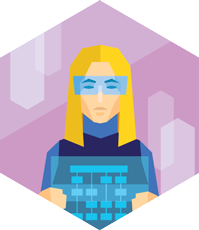
This professional develops user-friendly, adaptive and safe interfaces for equipment, devices and software of various levels.He/she is highly competent in usability (creating interfaces most comfortable for the user).The interface designer is an existing and popular job, with 2,015 vacancies published in July 2014, according to HeadHunter.However, the growing intensity of human-machine interaction will require greater numbers of such specialists, while their skills will need further development to be able to achieve new objectives.

Specialist in software development. Audits complex IT systems processing data and making decisions based on such data. Errors in, or breach of, such systems pose high risks.Provides audits of such systems for the security of their software, including the process of its development and qualifications of the developer.

Specialist in communications with end users of IT products and promotion of new solutions to groups having a conservative attitude towards advanced technology.The IT preacher will teach people to use new software and services to reduce the digital gap.Activities aimed at training people in “digital literacy” are offered today, usually on a voluntary basis, but this will become a real job in the near future.

Professional who designs interfaces compatible with the human nervous system, for controlling computers and household and industrial robots, taking into account the psychological and physiological traits of the user. Today, neural interfaces are used mostly for entertainment. For example, the Australian company Emotiv Epoc produces neural helmets for controlling characters in MMORPGs. In the future, however, neural interfaces will be used to control various sophisticated devices, or even to communicate nonverbally with other people (as in the DARPA Silent Talk system now in development).

Specialist engaged in shaping regulatory interaction on the Internet (including virtual worlds) and devising legal protection systems for people and property on the Internet (including virtual property).

Advisor on the information security of Internet users.Compiles the current information image of a client based on all of the information about them available on the Internet.Audits the client’s activities on the Internet for weak spots, confidentiality and general security. At the client’s request, eliminates weak spots, edits (or deletes) the user’s information on the Internet, and shapes the information image of the client.

Specialist tasked with dealing with the lower levels of information infrastructure, ensuring the security of dedicated network segments at these levels (residential buildings and industrial facilities will presumably be separated from the Internet, to form their own secure segments connected to the common network via secure low-level connections).
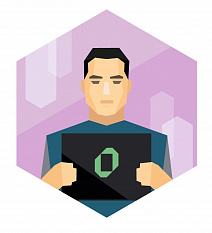
A specialist who creates ready-made IT solutions from prebuilt templates using a graphical user interface instead of classical programming. He works with databases, design, app integrations and automation of processes. One such professional can replace a team of IT specialists. Zerocoders are already creating mobile and web applications, automating processes and integrating with AI. That's why Innopolis University added zerocoding to the list of its master's programs. According to the US company Grand View Research, by 2027 the volume of the global market for zerocode development will reach 87 billion dollars.
Financial sector
The financial sector is a system within an economy that helps regulate the redistribution of capital, allocating it to projects most relevant for the market . The general trend in the new economy is the reducing number of human intermediaries, which are being replaced by automated systems. For this reason, many jobs in the sector (such as accountant or clerk) are becoming endangered and will eventually disappear in the coming years.
Nevertheless, the financial sphere may
offer leeway for creativity and original
thinking in matters related to funding large-scale or innovative projects, risk insurance,
development of new tools for retirement
savings, etc. In addition, the Internet is giving
birth to new financing tools, such as crowd
funding and crowd investing . New, digital
code-based currencies (cryptocurrencies) are
appearing, with other interesting processes
underway.

Specialist organizing the operation of crowd funding platforms, performing a preliminary evaluation of projects to receive crowd funding, and resolving conflicts between investors and project owners. In Russia, the required set of skills has not yet developed into a new profession, while western managers, advisors and marketing experts specializing in crowd funding projects are already actively offering their services.

Specialist engaged in building “portfolios” of talented professionals, supporting their educational and career pathways to maximize their income and, consequently, the income of the fund (taking after the agents of movie stars and young athletes).

Specialist in determining the value of intangible assets, such as ideas, business models, inventions, tangible and social technologies, etc.The job already exists in Russia, with the demand for relevant professionals exceeding the supply.According to HeadHunter, there were only 2 resumes for 14 vacancies in July 2014.

Professional who organizes traditional, merit and alternative currency exchange systems. Online services exist already, where you can exchange bitcoins for Webmoney or transfer them to a common bank account in your own currency (e.g. 24change.com or alfacashier.com). Governments are still wary of these types of financial transactions, as unconventional money flows are harder to control. The process, however, is in full swing now: according to 2014 data, global bitcoin turnover was evaluated at roughly $11 billion, with the first virtual currency ATMs having appeared already.

Specialist for the development of models for personal investment in pension funds and other financial instruments, depending on income, job, lifestyle, and senior age expectations.
Management
Management is not a separate sector in itself, but professional managers are present in all sectors of the economy. Many management specialties are metasectoral, which means that professional managers can freely switch between sectors. In the future, all production processes will grow in complexity, thereby increasing demand for employees with good organizational skills . On the other hand, the automation of solutions has made a revolution in the management field. In the future, its main objective will be to find distributed management mechanisms, i.e. the capabilities of setting up and coordinating distributed and mobile teams of professionals for specific projects. More and more specialists will work remotely and part-time, investing their time and effort in several concurrent projects. Aside from that, changes in the society and in consumption habits will happen so fast that management teams will need to continuously analyze new trends.
Whereas in the past, a standard management system had the appearance of a pyramid with multiple levels of middle management, today, connections between employees are becoming increasingly horizontal, with employees gaining greater independence in decision making, while some firms are even experimenting with supervisor-free models. For example, in the U.S.- based Valve, the publisher of popular computer games such as Portal, Half-Life, Counter-Strike and Team Fortress, all 400 employees enjoy equal authority. They team up for particular projects at their discretion, without centralized management.
In the future, the key objective of management will be to find distributed management mechanisms, i.e. the capabilities of setting up and coordinating distributed and mobile teams of professionals for specific projects. More and more specialists will work remotely and part-time, investing their time and effort in several concurrent projects. Aside from that, changes in the society and in consumption habits will happen so fast that management teams will need to continuously analyze new trends.
In the 2020s, hierarchical organizations (e.g. independent producers’ communities)
will play a bigger part, coordinating their sales and production plans via networks,
as well as investments in equipment and
human capital.

Professional engaged in organizing and supporting a dialogue between independent teams of producers, aligning their long-term goals with the common image of the future, and helping them define a programme of joint investments in production facilities and human resources. This represents a new level of project management. Future managers will have to coordinate the activities of project teams whose members are located in different countries.

Specialist engaged in studying the markets of a company’s innovative products using anthropological methods (e.g. overt observation), and enhancing connection between the company and its target audience. In the West, employment in the business domain has long been regarded as a logical development of an anthropologist’s career, ever since the consumption of products and services began to be studied in sociocultural and economic contexts. Relevant specialists are hired mostly by IT companies, including Intel and Nokia.

Professional who manages a company’s investments in startups created on the basis of the ideas of its employees and aimed at developing the company’s product line. Supports the growth of such startups, from conception to the production stage. Corporate venture funds constantly search for new promising solutions. For example, in 2011, Google Ventures launched a special programme for its employees: in exchange for information about viable startups, the company was prepared to pay a bonus of $10,000.

Professional maintaining a company’s document flow in foreign languages, controlling key messages (e.g. in selecting marketing slogans), training employees in expressing their messages in foreign languages, as well as in cultural specifics in negotiations with foreign partners. Advises company management on doing business in foreign countries. The lack of specialists able to resolve translation difficulties has been the reason of unsuccessful transactions, as well as advertising campaign failures. For example, when translated into Chinese in the 1980s, KFC’s corporate slogan, Finger-lickin’ good, came out as We will bite off your fingers, which, obviously, did not help the American fast food chain gain popularity with the locals.

Professional engaged in the audit of industrial facilities and providing recommendations on ways to reduce the environmental footprint through industrial upgrades or by changing operating practices and methods.This is a relevant and quite an old job existing in Russia since 1993.In 2005, the National Environmental Audit Chamber was established to carry out independent environmental audits, issue accreditations to environmental audit firms, and train environmental auditors.However, the practically non-existent legal framework and the non-transparent environmental policies of businesses do not encourage experience sharing between specialists and are holding back the sector’s development.Nevertheless, demand for these specialists is increasing.

Professional in calculating personal investment models based on projected income and expenses, providing recommendations for planning family and personal budgets, career development, etc. The job of personal financial advisor already exists on the Russian market, but, considering the fact that increasingly more specialists will work part-time and be able to run several concurrent projects (including in foreign countries), income sources may become more diversified, and professional advice will be needed more often.

Specialist who works in offline companies, develops Internet-based promotion mechanisms for products, organizesmarketing campaigns on the Internet, supports own online stores, or works with partners to improve service for customers (e.g. promptness of delivery). The specialty can already be considered developed in Russia, with 260 vacancies published in July 2014, according to Career.ru. Still, demand for the profession is expected to grow.

Specialist engaged in shaping a personal image using social networks and other public platforms in accordance with the customer’s goals and requirements. Building a personal brand is an important aspect of modern business coaching. An image tailored to a specific target audience can help a person stand out among other specialists and become a leader of public opinion in his niche. This boosts demand for the service.

Professional who consolidates an order and manages the activities of independent teams working within an industry community, to design, manufacture, and assemble a product to the client’s requirements.

Specialist “trading” in the working hours of freelancer specialists, i.e.managing people’s employment in the open market.The job will disappear in a longer-term perspective, due to the emergence of automated solutions.Technological advance is eliminating the need for permanent presence in an office.Moreover, a specialist with linguistic skills can even serve clients in foreign countries.At the same time, both freelancers and employers are lacking intermediaries, as recruiting agencies are still focused on full-time vacancies, while contractor search websites (such as Freelancer.ru) are not very convenient.Therefore, demand for time brokers will grow in the near future.

Specialist in the efficient use and allocation of personal and team time.This specialist is mainly tasked with optimizing time allocation in order to absorb the emerging technological opportunities and needs of a person or a team.

Specialist in tracking the emergence of new trends in various branches of the economy, social life, politics, and culture, preparing reports on the influence of new trends on customer needs. In a long-term perspective, the ability to work with “images of the future” will become a versatile competency for any manager.

Professional tasked with organizing online user communities, supporting the dialogue with company product designers to develop a product line, and maintaining their loyalty (e.g. arranging contests, etc.).

Specialist in remote legal support via the Internet, including advice on the statutory norms of the country in which a business is to operate (regardless of the lawyer’s country of operation).
Social sector
The traditionally conservative sector of public and social services has undergone profound transformations with the advancement of information technology. However, this is just the beginning of a long journey.
First of all, the services are becoming more transparent. One can report a problem (e.g. a bad road or lack of street lighting) in a public online space and get a report on its solution at the same place. Users can also track the progress of a reform and post their comments.
Secondly, citizens are provided an opportunity to become involved in the administration of regions and territories and participate in tackling specific social issues. This includes initiatives coming from authorities, as well as independent organizations of people willing to implement an idea, e.g. the volunteer project Lisa Alert to find missing people, or Brother for Sister, a volunteer movement of men walking women home after dark. Problem solving has also become more targeted, with the possibility of providing aid to a particular disabled person or economically disadvantaged family.
Finally, society is altering its approach to people with disabilities, with information technology enabling the latter to be fully involved in social activities. For example, blind and visually impaired people can work and communicate on the Internet using special software and Braille displays, while people with limited mobility can imagine themselves dancing with the help of the Oculus Rift virtual reality headset.

Manages a crowd sourcing platform to collect information on problems in families, households, districts, roads, parks, and other public spaces, etc., and relays such requests to government authorities or non-profit organizations, while tracking their execution. For example, Russia has had the Democrator initiative for several years now. The project is an electronic platform for communication between citizens and authorities, organizations, parties and social movements. The service is moderated by a team of professional lawyers helping users file official requests to various agencies and achieve results.

Specialist in providing support to community groups working to improve the environmental situation, by arranging information exchange between them and helping them establish supervision over industrial production and monitor the activities of local authorities in cities and/or villages. Many people generally wish to participate in some kind of environmental activity, though they often lack an organizer who would tell them what to do and where. Some environmental activists are already gathering people into volunteer groups, but the area will need more specialists in the future.

Specialist in organizing online and offline dialogue between public activists and government officials responsible for particular areas (e.g. education, utilities, construction, pensions, etc.) in order to develop solutions together.

Professional engaged in teaching national language and culture, including via online platforms. Russian language schools for migrants are already opening in Moscow and Saint Petersburg, including those for their children, functioning within ordinary schools. The government promised to open the first online school for foreigners in 2015.

Compiles personal request files (e.g. children with cancer or lonely elderly people) and links people seeking help with charity givers, who provide aid in various forms (money, in-kind contributions, keeping company, etc.). For example, the popular blogger, doctor and philanthropist Elizaveta Glinka (aka Doctor Lisa) posts on her Livejournal reports of her own Fair Aid fund, as well as information about other projects and people in need of help.

Specialist in assisting in the peaceful resolution of conflicts arising between social groups due to property-related, cultural, national, religious, and other reasons.

Specialist who helps people with disabilities lead a full life by training them in skills required for remote employment, helping them select a job, and organizing their work and leisure (e.g. by finding relevant online communities, communication platforms, training courses, etc.).

Helps contract the government’s functions in the social sector (e.g. building and premises cleaning, water supply and heating, energy saving, solid waste recycling, building and utilities repairs, municipal transport, kindergartens, etc.) to social entrepreneurs, who arrange the provision of these services in the form of state-private partnerships.
Фармацевтика
Бурный рост информационных технологий и развитие медицины приводят к многообещающим изменениям на рынке фармацевтики во всем мире. В России же есть дополнительный стимулирующий фактор — в связи с тенденцией импортозамещения лекарственных средств растет производство отечественных препаратов, разрабатываются новые программы и методики лечения, а также медицинские аналитические и диагностические ИТ-системы.
<p> Биоэтик — специалист, обеспечивающий нормативно-правовые и этические рамки деятельности медицинских, диагностических и биоинженерных центров. Без консультаций с биоэтиком не обойдется ни одна передовая лаборатория – особенно когда дело касается исследований с эмбрионами и человеческим биоматериалом. </p>
<p> Генный инженер — специалист, который занимается программированием генома под заданные параметры. Речь может идти как о геноме человека (например, для лечения наследственных заболеваний), так и, например, о геноме бактерий (чтобы они производили биологические молекулы, используемые как лекарства, например рекомбинантный инсулин). </p>
<p> Клинический биоинформатик — специалист, который в случае нестандартного течения болезни строит математическую модель на основе больших данных, чтобы анализировать разные биохимические процессы. Это может быть анализ генетической информации или нарушений в организме при протекании того или иного заболевания.Эта профессия уже существует в России и существуют программы обучения в различных вузах, но запрос на таких специалистов будет расти. </p>
<p> Специалист по трансляционной медицине — профессионал, который занимается организацией передачи результатов исследований в практическое здравоохранение. Сейчас в среднем на разработку и внедрение одного лекарства требуется около 10–15 лет — это означает, что многие люди продолжают годами страдать от болезней, когда решение уже найдено. Специалист по трансляционной медицине ищет способы ускорить путь от разработки нового перспективного лекарства до его попадания на рынок, например, за счет компьютерного моделирования и высокотехнологичных лабораторных исследований. </p>
<p> Специалист по фармацевтике высоких энергий — разрабатывает радиофармацевтические препараты, используемые для медицинской диагностики и радионуклидной терапии. Радиофармпрепараты предназначены для медико-биологических исследований, радиоизотопной диагностики и лечения различных заболеваний, главным образом для лучевой терапии. Эта профессия существует уже достаточно давно, но в ней все еще есть дефицит кадров, кроме того, радиофармацевтические технологии постоянно развиваются, так что это перспективная область работы. </p>
<p> Таргетный нанотехнолог — разработчик способов доставки лекарственных средств, обеспечивающих прицельное попадание в определенные ткани и клетки. Некоторые лекарства от рака, созданные с использованием наночастиц (абраксан и доксил), уже одобрены в США, и по всему миру ведутся соответствующие разработки. </p>
<p> Фармакологический эколог —регулирует экологическую безопасность в фармакологическом производстве. По международной классификации экологической безопасности производств, фармацевтические лаборатории и предприятия относятся к группе риска. А значит, нужны специалисты, способные этот риск оценить и предотвратить. </p> <br>
<p> Фармакоэкономист — эксперт, который оценивает тренды ценовой политики в фармацевтике, системы классификации лекарств и то, как все это отражается на стоимости медицинских услуг. В результате он помогает фармкомпании назначить выгодную и при этом справедливую (во всяком случае, с точки зрения рынка) цену. </p>
Ядерный кластер
Ядерные технологии — атрибут современной цивилизации, оказывающий влияние на качество жизни человечества в целом и ее различные аспекты в отдельности: от военной промышленности и энергетики до науки и сохранения окружающей среды. На территории Калужской области действуют четыре всероссийских научных центра, развивая альтернативное использование ядерной энергии в мирных направлениях: ядерной медицине, радиоэкологии, радиохимии, сельхозрадиологии и других.
Изотопный аналитик — использует методы анализа стабильных изотопов для решения различных экологических и агропромышленных задач.
Проектировщик защитных материалов— создает новые материалы, обладающие стойкостью к радиации, для применения на производствах и на АЭС, а также в космической отрасли.
Проектировщик инфраструктуры захоронения радиоактивных отходов — строит карту максимально безопасных зон для захоронения, продумывает способы упаковки радиоактивных отходов, логистику их доставки и обеспечение безопасности захоронений.
Радиоэколог— специалист, изучающий влияние естественной и техногенной радиации на живые организмы. Может работать как в службах экологического мониторинга, так и в сельском хозяйстве в команде с селекционерами.
Разработчик «ядерных аптек»— составляет для медучреждений готовые наборы из шприцев с готовыми к использованию радиофармпрепаратами, защищенные специальной безопасной упаковкой.
Разработчик опреснительного оборудования— проектирует опреснительное оборудование, интегрированное с АЭС, так, чтобы оно позволяло максимально экономить энергозатраты.
Специалист по реабилитации загрязненных территорий — разрабатывает программы реабилитационных работ, снижающих радиационную нагрузку на окружающую среду (сбор и сортировка отходов, очистка грунта и воды, рекультивация территорий и т. д.).
Ядерный селекционер — специалист, работающий на стыке физики, биологии и генетики, который использует ядерные технологии в селекции (для ускоренной контролируемой мутации растений и генетического анализа у сельскохозяйственных животных).
Управление городской средой
Качество жизни горожан все чаще выходит на первый план при городском проектировании, в том числе и потому, что с нарастанием темпа и сложности жизни от людей требуется высокий уровень энергии, и у них должна быть возможность быстро восстанавливаться. Комфортная среда для частной жизни, работы, общения и отдыха станет очень важным фактором развития экономики и благополучия общества, и вся городская инфраструктура будет ориентированана поддержание и повышение комфорта.
BIM-менеджер-проектировщик —специалист, работающий над полным жизненным циклом объекта. BIM-моделирование (Building Information Modeling, информационное моделирование здания) предполагает сбор и комплексную обработку в процессе проектирования всей архитектурно-конструкторской, технологической, экономической и иной информации о здании со всеми ее взаимосвязями и зависимостями, когда здание и все, что имеет к нему отношение, рассматриваются как единый объект. Цифровые модели домов будут входить в постоянно обновляемый электронный «слепок» города, разработанный архитектором цифровых моделей.
Manages a crowd sourcing platform to collect information on problems in families, households, districts, roads, parks, and other public spaces, etc., and relays such requests to government authorities or non-profit organizations, while tracking their execution. For example, Russia has had the Democrator initiative for several years now. The project is an electronic platform for communication between citizens and authorities, organizations, parties and social movements. The service is moderated by a team of professional lawyers helping users file official requests to various agencies and achieve results.
Архитектор живых систем— специалист по планированию, проектированию и созданию технологий замкнутого цикла с участием генетически модифицированных организмов и микроорганизмов. Такой профессионал будет незаменим в автономных городах – он сможет рассчитать необходимую мощность биореакторов, разработает проекты городских ферм и тщательно продумает систему переработки мусора.
Архитектор цифровой модели города— специалист, который разрабатывает и усовершенствует цифровую модель города, включающую разные уровни инфраструктуры (освещение, отопление, водо- и газопроводы, транспортную систему, общественные и культурные пространства, дизайн, экологию, доступность и т. д.). Работает в команде со специалистами из разных отраслей.
Архитектор энергоэффективных домов — специалист, занимающийся проектированием энергетически автономных домов, преимущественно или полностью обеспечивающих себя за счет микрогенерации энергии (альтернативные источники энергии, тригенерация – использование сразу электричества, тепла и холода) и использования энергосберегающих материалов и конструкций. Энергосберегающие технологии начали использоваться в нашей области еще с 2016 года (утепление фасадов новыми материалами, датчики движения и приборы учета тепла), но все еще стоит задача их повсеместного внедрения и усовершенствования.
Координатор городской инфраструктуры — специалист, который контролирует разные уровни городской инфраструктуры и взаимодействие между ними, вмешиваясь при необходимости. Много работает с ИТ, к нему приходят все информационные потоки из цифровой модели города. По мере автоматизации систем инфраструктуры его роль будет все больше сводиться к экстренному реагированию.
Координатор программ развития сообществ — специалист, который организует и поддерживает диалог между независимыми командами производителей, согласовывая их долгосрочные цели и общий образ будущего, помогая им определить программу совместных инвестиций в производственные мощности и людей. Это новый уровень управления проектами: в будущем управленцам придется координировать работу проектных команд, участники которых находятся в разных странах.
Проектировщик доступной среды— специалист, который занимается разработкой инфраструктурных решений для детей, пенсионеров и людей с ограниченными физическими возможностями вокруг объекта недвижимости (например, детские площадки, лифты для инвалидов, указатели для слабовидящих людей, пандусы, места для отдыха и т. д.).
Проектировщик инфраструктуры умного дома — занимается проектированием, установкой и настройкой интеллектуальной системы управления домашним хозяйством (например, бытовая техника, системы безопасности, энергоснабжения, водоснабжения и др.). «Умные дома» появляются уже сейчас, но данная профессия вряд ли станет популярной ранее чем через 7–10 лет.
Специалист по кибербезопасности и эксплуатации умных домов — задачей такого профессионала является контроль за функционированием умных домов, отслеживание возможных киберугроз и своевременное реагирование. Такой специалист является программистом, профессионалом в области защиты информации и сетей, однако должен представлять себе конструкцию умного дома, особенности его устройства и функционирования как физического объекта.
Экоурбанист — создает проекты городских пространств на основе экологических биотехнологий; специализируется в областях строительства, энергетики и контроля загрязнения среды. Он может как помогать строить новые города, так и разрабатывать программы улучшения уже существующих. Высокотехнологичные «зеленые города» проектируют и строят в Малайзии, Китае, Арабских Эмиратах, Индии, Южной Корее и странах Европы. Старые города постепенно реорганизуются, становясь более экологичными. Например, немецкий город Фрайбург, основанный в 1120 году, планирует к 2046 году перейти на полное энергетическое самообеспечение за счет альтернативной энергетики. Первый экогород в России, Новое Ступино, строится в Подмосковье.
Информационные технологии (ИТ)
Информационные технологии (ИТ) — сегодня одна из наиболее быстро развивающихся сфер экономики. Происходящие в ней изменения открывают новые и, на первый взгляд, фантастические возможности и в других областях — например, в проектировании, транспортировке, управлении людьми и ресурсами, маркетинге и образовании. Фактически не остается ни одной отрасли, которая не была бы затронута информационными технологиями.
Specialist in designing systems for collecting and processing large arrays of data received from the Internet, and developing analytical models and interfaces for assembling them. There are open vacancies in the specialty in Russia, though demand is not very high yet.
Qualified specialist for a wide spectrum of operations involving data processing systems.In particular, this specialist designs databases, develops action algorithms, ensures effective access of users to data storages, controls the quality and logic of information storage and extraction.Such specialists are already in demand (65 vacancies were published in the specialty in July 2014, according to HeadHunter), and even more of them will be needed in the future, when information technology has penetrated all areas of human activity.
This professional develops user-friendly, adaptive and safe interfaces for equipment, devices and software of various levels.He/she is highly competent in usability (creating interfaces most comfortable for the user).The interface designer is an existing and popular job, with 2,015 vacancies published in July 2014, according to HeadHunter.However, the growing intensity of human-machine interaction will require greater numbers of such specialists, while their skills will need further development to be able to achieve new objectives.
Specialist in software development. Audits complex IT systems processing data and making decisions based on such data. Errors in, or breach of, such systems pose high risks.Provides audits of such systems for the security of their software, including the process of its development and qualifications of the developer.
Specialist in communications with end users of IT products and promotion of new solutions to groups having a conservative attitude towards advanced technology.The IT preacher will teach people to use new software and services to reduce the digital gap.Activities aimed at training people in “digital literacy” are offered today, usually on a voluntary basis, but this will become a real job in the near future.
IT-экономист— специалист, который занимается оценкой эффективности развертывания IT-инфраструктуры/IT-разработки в конкретном случае, рассматривает различные финансовые решения для использования IT (где купить «железо», разрабатывать программное обеспечение самим или отдавать на аутсорсинг), оценивает издержки в ходе всего жизненного цикла IT-продуктов.
Advisor on the information security of Internet users.Compiles the current information image of a client based on all of the information about them available on the Internet.Audits the client’s activities on the Internet for weak spots, confidentiality and general security. At the client’s request, eliminates weak spots, edits (or deletes) the user’s information on the Internet, and shapes the information image of the client.
Specialist tasked with dealing with the lower levels of information infrastructure, ensuring the security of dedicated network segments at these levels (residential buildings and industrial facilities will presumably be separated from the Internet, to form their own secure segments connected to the common network via secure low-level connections).
Специалист по верификации данных — специалист, разрабатывающий и применяющий алгоритмы верификации данных по запросу клиента с использованием блокчейна. Поскольку безопасность данных становится одной из важнейших задач в отрасли, прикладные системы, обеспечивающие надежное и достоверное хранение и передачу данных, будут очень востребованы.
Специалист по машинному обучению. Строго говоря, это уже не новая профессия, услугами таких специалистов уже пользуются «Яндекс», ABBYY и другие ИТ-компании. Но поскольку таких специалистов не хватает рынку и они еще долго будут востребованы, мы включили ее в список. Специалист по машинному обучению составляет алгоритмы, по которым компьютер анализирует полученную информацию, делает выводы и использует их в дальнейших решениях. Специалист по глубокому машинному обучению конструирует самообучаемые искусственные нейросети, способные на более гибкое решение задач. Для этого надо подготовить данные, на которых программа будет учиться, отобрать методы анализа и управлять ходом обучения. Профессия требует как навыков программирования, так и знания математической статистики и матанализа.
Логистика
Интеллектуальные системы становятся неотъемлемой частью транспортной инфраструктуры – как в регулировании дорожного движения, так и в управлении транспортными средствами. Большие перспективы обещает интернет вещей (Internet of Things, IoT) — система взаимосвязанных вычислительных устройств, позволяющих передавать данные по сетям без человеческого ввода (например, машины смогут передавать информацию складам или обмениваться ей между собой). IoT поможет компаниям контролировать инвентарь, управлять складскими запасами, оптимизировать маршруты и многое другое.

Manages the servicing of robotic transportations networks and configuration of computer software for robotic mechanisms and vehicles, primarily unmanned.
Professional with a competence in selecting the best methods of cargo and passenger delivery using different modes of transportation; control and adjustment of traffic throughout a multimodal network; monitoring of the passability of transportation hubs; redistribution of traffic flows in transportation networks.
Designs intermodal hubs (systems for changing between modes of transportation), calculates their cargo and passenger capacity, wear resistance, and evaluates their growth potential. Such specialists already exist in Russia as well as in the West, however, the increasing load on the transport infrastructure and growth of passenger and cargo traffic will boost demand for them significantly in the future.
Services technologically heterogeneous transportation structures, intermodal cargo and passenger hubs, infrastructure and station facilities.
Develops software for unmanned vehicles and traffic management systems; controls smart management systems. Various solutions exist today to monitor complex shipments, though shipments are managed by people. The future will require automated traffic management systems.
Professional analyzing and monitoring information, environmental and technological threats to transportation networks. Unlike traffic safety experts, these engineers analyze and prevent problems connected with the functioning of whole transportation networks. With the increasing speed of data transmission, demand is growing for faster movement and higher speed of transportation, which means more stringent requirements for network infrastructure and safety.
Аналитик таможенной безопасности. Традиционного таможенника с собакой заменит сканер, а данный специалист анализирует результаты проверки на сканере и принимает решение о том, что делать с небезопасным товаром.
Координатор беспилотного транспорта — специалист, который контролирует и «подстраховывает» беспилотный транспорт, включаясь в работу там, где возникают какие-то проблемы. В случае необходимости он корректирует данные и перенаправляет беспилотник.
Оператор-аналитик транспортных решений — специалист, который, получая информацию от различных путей сообщения, формирует и собирает общую транспортную карту, используя различные ИИ-решения. Такой специалист должен одновременно ориентироваться в разных транспортных сетях, уметь работать с большими данными и иметь развитые коммуникативные навыки, чтобы при случае разрешать кризисные ситуации.
Проектировщик «умных дорог» — профессионал, который занимается инженерным проектированием дорог. Дороги в будущем не просто соединяют точки на карте, разрезая экосистему, они являются ее частью. Таким образом, вырастают требования к их проектированию — экологичность, адаптивность, безопасность и т. д. Такой специалист проектирует дорожное адаптивное покрытие, разметку и дорожные знаки с радиочастотной идентификацией, системы наблюдения и датчики для контроля состояния дороги.
Энергосети
Электроэнергия — это кровь экономики, а энергосети — ее кровеносная система. Благодаря развитым сетям в самых удаленных уголках области есть свет, горячая и холодная вода, интернет. Потребности людей растут, мир становится сложнее, а потому усложняются и требования к энергосетям, а специалисты в этой области становятся все более востребованными.

Checks power grids for compliance with safety, efficiency and other user requirements, providing professional advice on energy saving legislation. Europe and the USA have a carefully elaborated system of electricity consumer rights protection, with many experts on the subject, who commonly provide advice on how to pay less for power. The service will become sought-after in Russia as well, not least of all to make sense of all the complex benefit and subsidy schemes, which are the subject of complaints even from professionals.
Professional engaged in auditing and consulting in power consumption. Inspects private homes, residential blocks, detached buildings and factories for energy losses and provides recommendations on power consumption optimization. Energy audit already exists as a licensed activity. The job is quite popular, with 845 vacancies in July 2014, according to HeadHunter. Demand for these specialists will rise even higher in the future.
Specialist working to maximize the comfort and power efficiency of user environments. This system designer advises on the best tools to use in a particular situation and what to do with the most power-intensive household appliances, such as the air conditioner or refrigerator.
Specialist analyzing potential system failures, designing the most efficient operation modes, and ensuring the designed safety of power grids and waste disposal. Familiar with non-destructive control methods and smart grid commissioning.
Specialist with a good knowledge of the Russian and global power market, dealing with power sales. Need for the profession is caused by the increasing competition on the power market and emergence of a large number of private businesses. There is no demand for it in Russia as of now, but issues of micro generation and distributed grids will become highly topical very soon. In the west, however, the specialty of power marketing expert is quite developed.
Specialist tasked with designing and modelling smart grids, micro generation systems, and smart power environments for various purposes; develops technological and infrastructural requirements to systems throughout their life cycle. Provides solutions for the same task as the designer of power consuming systems, but on the end of power supply. There are foreign companies that provide the service (e.g. Siemens offers the SureGrid service, enabling real-time power consumption control within a specific building).
ИТ-энергетик — специалист, занимающийся обслуживанием цифровых комплексов и цифровых подстанций. Современное оборудование упрощает эксплуатацию, однако предъявляет требования к владению новыми компетенциями в области ИТ.
Проектировщик электрозаправок — специалист, который занимается проектированием инфраструктуры для зарядки электромобилей. Пока что подобная сеть в России наиболее развита в Москве, где есть около 100 заправочных станций.
Разработчик ПО в энергетике— ИТ-профессионал, который занимается архитектурой и созданием программного обеспечения для цифровых подстанций и комплексов. Стремительный переход к цифровым решениям в отрасли потребует большого количества таких профессионалов.
Робототехника
Технологии производства роботов стали значительно более доступными, что вызвало новый всплеск интереса к робототехнике. Использование умных машин поможет эффективно решать сложные задачи в разных отраслях экономики — от промышленности и логистики до медицины и туризма.
Professional tasked with designing and programming household robots (e.g. babysitter, cleaner, washer, gardener, dog walker, etc.), which will help run the house. These robots are integrated with other components of a smart home and can move around and perform complex household work.

Specialist designing robotic devices for manufacturing (for painting, welding, packing and stamping jobs), industrial logistic devices, e.g.loaders, transporters, manipulators, and robotic systems consisting of those devices, such as “lights-out” factories.Vacancies in the specialty are already appearing on HeadHunter.
Professional engaged in controlling and servicing robotic systems, including in complex and dangerous facilities and in dealing with hard-to-reach or microscopic objects. The job is already on offer. General director of the Chebarkul Milk Factory, who announced a transition to automated production in 2014, made this comment: “We have a lot of work done manually now, but when we have had the production lines automated, we will need people to maintain the equipment”.
Проектировщик взаимодействия роботов— специалист, который проектирует алгоритмы взаимодействия между роботами. Он способен разложить задачу, невыполнимую для одного робота, на отдельные задачи для разных роботов так, чтобы в сумме получился желаемый результат.
Проектировщик коботов— специалист, который проектирует системы, в которых человек работает в коллаборации с роботом. Его задача — «состыковать» возможности человека и машины и оптимально распределить между ними различные функции для решения производственных задач, а также обеспечить безопасность человека в присутствии робота. Варианты взаимодействия могут быть разными — например, робот может в основном работать сам, но останавливаться или ограничивать амплитуду движений, заметив поблизости человека. Или работать в непосредственном физическом контакте — например, если надо совершить очень точные и скоординированные действия (координация — преимущество человека) с очень тяжелым объектом (сила — преимущество робота).
Разработчик «искусственных мускулов» для роботов— специалист, который ищет и при необходимости создает новые материалы и технологические решения для приводных устройств, обеспечивающих движения роботов («искусственных мускулов»), стремясь к уменьшению размеров, массы и энергоемкости.
Разработчик экзоскелетов— специалист, который проектирует экзоскелеты, то есть киберустройства, которые увеличивают силу мышц человека и амплитуду его движений за счет эффективного копирования биомеханики мышц. В 2014 году молодые ученые из обнинского Института атомной энергетики НИЯУ МИФИ создали работающий на пневматике экзоскелет, который стал первым в России «гражданским» вариантом среди подобных разработок. Его можно использовать, например, при разборе завалов и для реабилитации пациентов после травм.
Новые материалы
Возможности материалов достаточно сильно ограничивают развитие технологий в разных областях — например, в медицине возможности протезирования во многом упираются в свойства биосовместимых материалов, а диапазон инженерных решений будет зависеть от того, какой формы деталь технически можно сделать из того или иного материала. Поэтому инновационное материаловедение — одна из самых перспективных областей современной науки, двигающая самые разные отрасли экономики.
Specialist engaged in developing and implementing recycling technologies, creating new materials from industrial waste, and developing waste-free production processes. Russia is only beginning to master the technologies of lean and sustainable production actively used in the West. For example, young designer Victor Monserrate invented the recycling bicycle, a machine that turns plastic waste into a thread that can be used to produce furniture. New Zealander Daniel McLaughlin found out that rug producers wasted about 7% of wool, and launched a “biowool” production line using wool waste and biorubber as raw materials.
Specialist who replaces traditional materials with composites in construction, mechanical engineering, robotics, medicine, etc.This professional will design advanced materials depending on the requirements of consumer industries regarding frost resistance, fragility, durability, hypoallergenic properties, etc.
Аддитивный инженер — конструктор-материаловед, специализирующийся на применении аддитивных технологий в сфере композитных материалов. Этому специалисту необходимо нестандартное инженерное мышление в связи с неограниченностью геометрических форм.
Инженер-экономист по работе с композитами— специалист, рассчитывающий экономическую целесообразность использования композитов на всем жизненном цикле продукта. В сложных инженерных конструкциях могут использоваться самые разнообразные материалы, и применение композитов оправдано не во всех случаях. Если системный инженер композитных материалов создает эти материалы, то инженер-экономист по работе с композитами определяет, где данные материалы необходимы.
Маркетолог в области композитов и керамики— специалист, который прогнозирует и проектирует открытие новых рынков или пересборку имеющихся под композитные материалы. Он обладает системным форсайт-мышлением, анализирует передовые технологии и понимает, как они могут повлиять на существующие рынки.
Разработчик оборудования для работы с композитными материалами— специалист, создающий высокоточное автоматическое оборудование (3D-принтеры, роботизированные системы и т .д.). Этим оборудованием будут пользоваться в дальнейшем все специалисты отрасли.
Специалист по разработке методов контроля качества новых материалов — профессионал, разрабатывающий как официальные стандарты качества для новых материалов, так и непосредственно методы контроля их качества, функциональности и безопасности.
Специалист по созданию библиотек CAD/CAE — создает библиотеки для работы с новыми композитными материалами в системах цифрового проектирования. Сочетает навыки конструктора композитов и углубленное знание программирования.
Технолог-материаловед по обработке композитов — занимается лазерной, пучковой, радиационной обработкой и отверждением композитных материалов и материалов фотоники.
Туризм
Сектор туризма и гостеприимства остается одной из отраслей с существенным потенциалом развития, как за счет спроса со стороны российских туристов, так и за счет интереса иностранных гостей. Калужская область представляет самый широкий спектр туристических предложений —- от сельскохозяйственного и культурного до промышленного и паломнического. Но, как и всю экономику, эту отрасль ждут значительные изменения, что означает изменения требований и к специалистам.
Designs various layers of augmented reality around an area, taking into account its landscape, as well as historical and cultural context. For example, this specialist can create several options for Red Square: Ivan the Terrible era, 1917, stilyagi, etc. The designer will have to combine the skills of designer and programmer with good historical knowledge.
Professional guide able to develop and personally conduct unique tours according to the requests of individual clients. In a way, the job already exists and will become mainstream as traditional travel operators disappear.
Advisor and responsible person for filling a virtual world with cultural content connected with a particular area. Creates the image and legend of a location, and adds design, identity, news, tourist services, and various events. All this makes the area unique, attracting visitors and turning it into a competitive tourist destination. The job already exists, and will grow in relevance as time goes on. Accordingly, requirements for specialists in this field will increase as well.
Игрофикатор туристического опыта— специалист, создающий туристические игры на основе разных достопримечательностей, исторических фактов и местных специалитетов. Поскольку туристы все чаще ждут от путешествий необычного эмоционального опыта, конкурентные преимущества получит тот, кто сможет превратить экскурсию или мастер-класс в захватывающую игру.
Коуч по межкультурной коммуникации для экскурсоводов— специалист, который учит гидов находить общий язык с представителями разных поколений и культур. Поскольку туристические группы будут все более разнообразными по составу (это касается и возраста, и национальности, и культурных кодов), востребованный экскурсовод должен быть очень гибким и владеть разными языками и стилями общения.
Куратор образовательного туризма—специалист на стыке сфер туризма и образования, занимающийся разработкой и внедрением туристических программ, выстроенных таким образом, чтобы развивать те или иные навыки. Скажем, туристический маршрут по Боровскому району, направленный на развитие командной работы или эмоционального интеллекта.
Куратор осознанного экотуризма— специалист, создающий и внедряющий культуру посещения лесов и парков. В его компетенции входит создание маршрутов для экотуризма, планирование инфраструктуры (электричество, вода, места для раздельного сбора мусора), внедрение экологических практик, обучение туристов культуре поведения.
Разработчик турнавигаторов— ИТ-специалист, создающий программы и приложения, позволяющие пользователю сориентироваться на определенном маршруте в контексте его интересов, вкусов, планов и текущих культурных событий. Подобные приложения подбирают пользователю тематические маршруты или авторские экскурсии.
Сценарист семейного туризма—профессионал, формирующий комплексные программы для туристов, путешествующих семьями. Он учитывает возрастные психологические предпочтения, организуя динамичный досуг, где дети и взрослые могут как провести время вместе, так и отдохнуть друг от друга (а это не менее важно).
